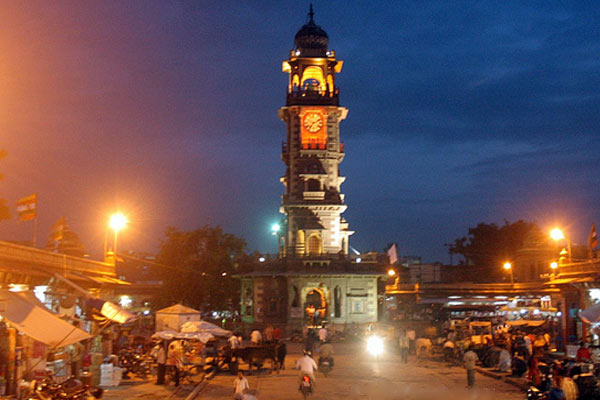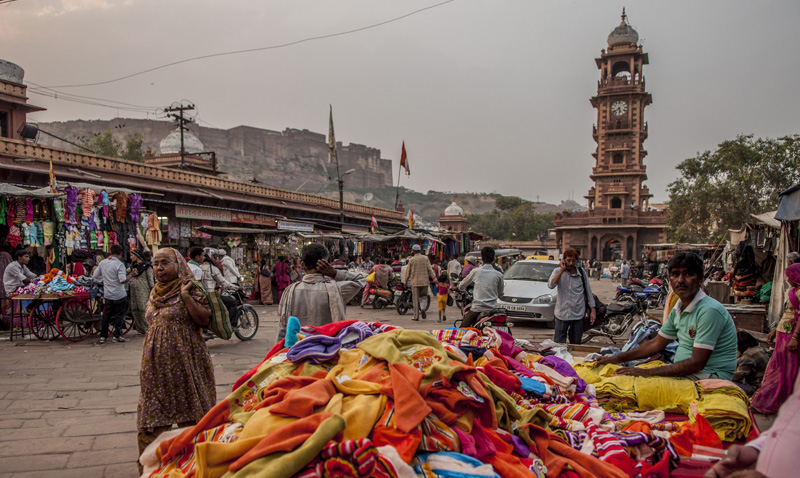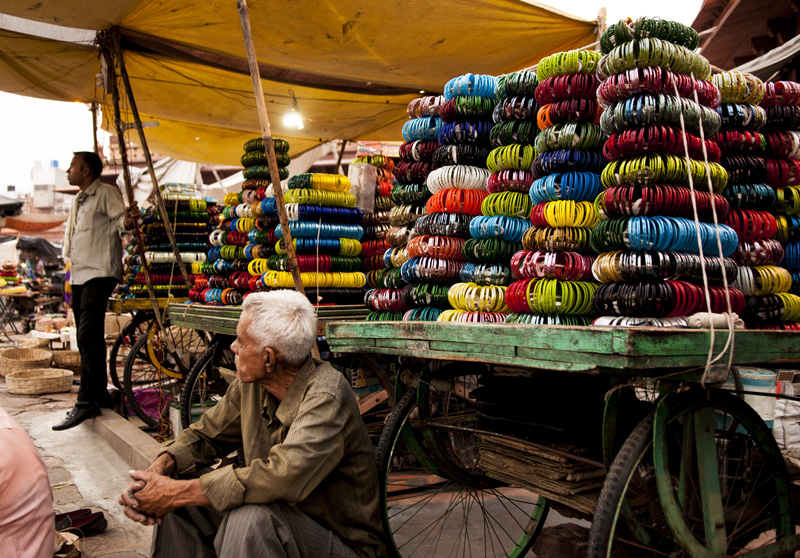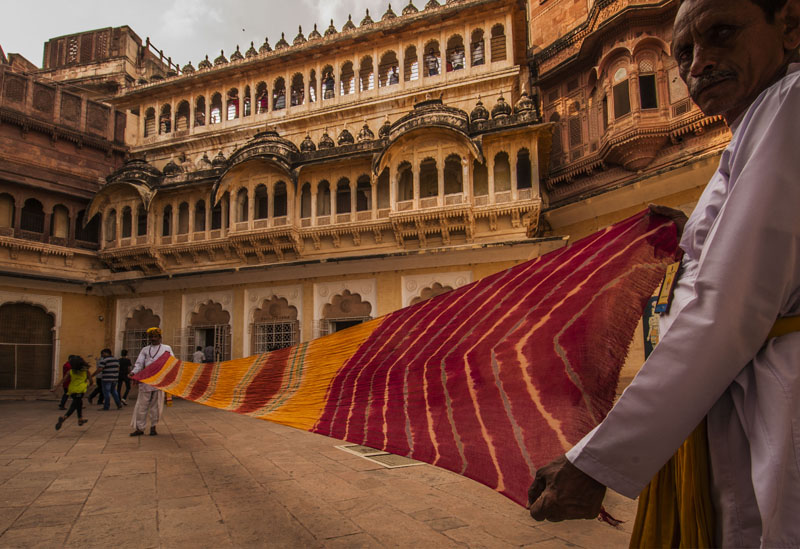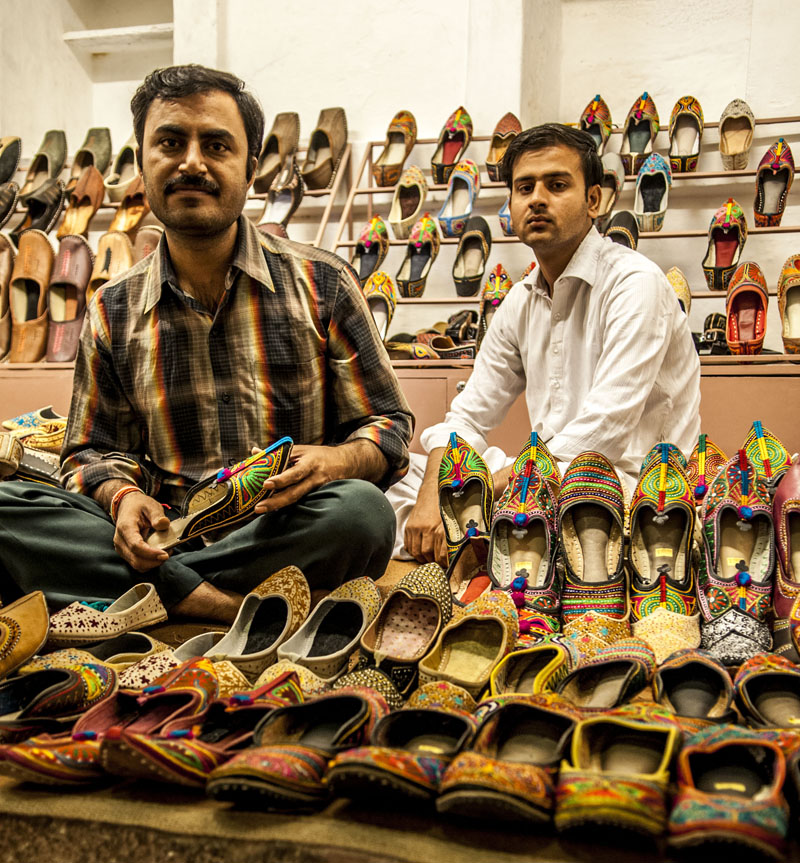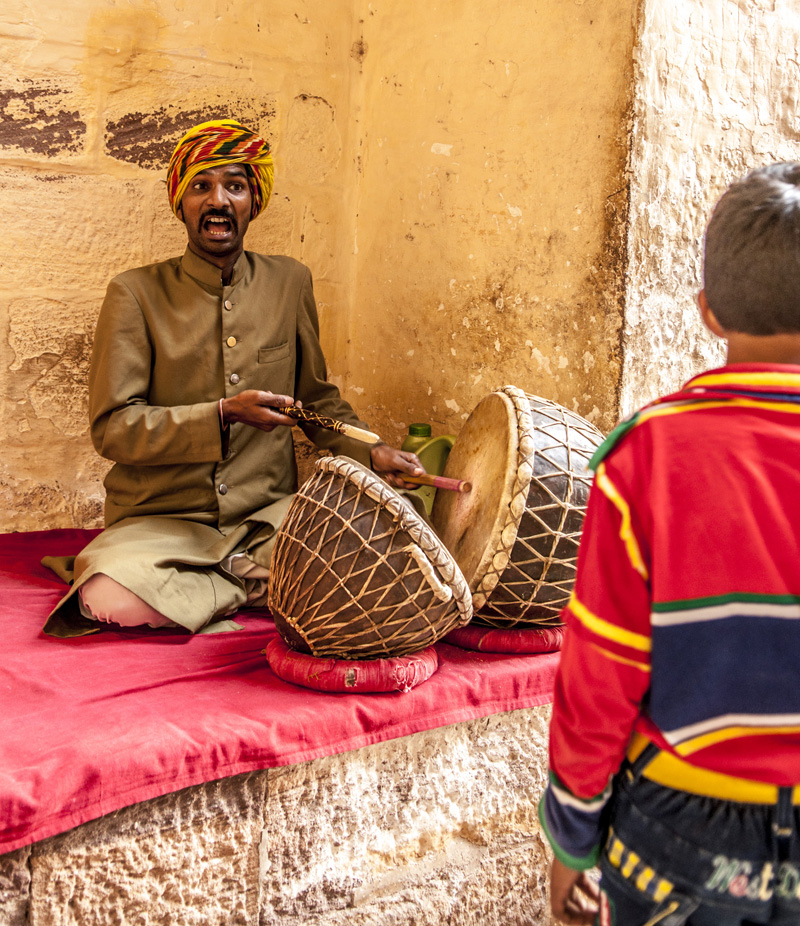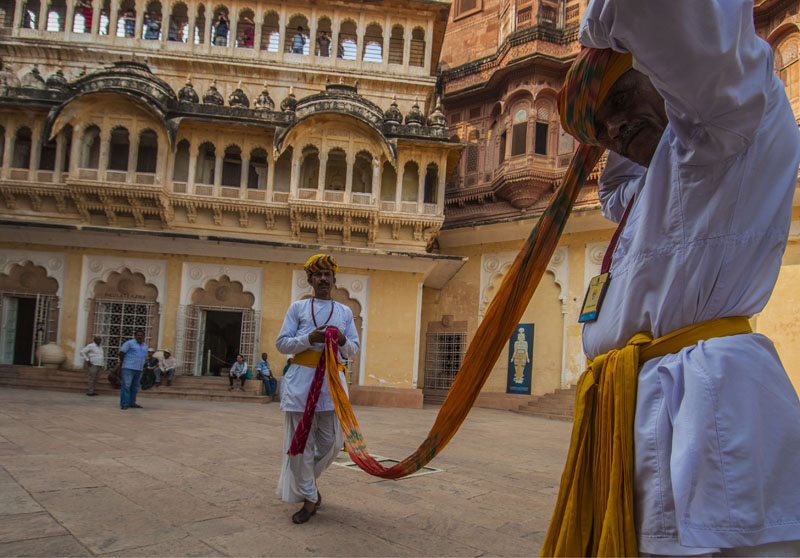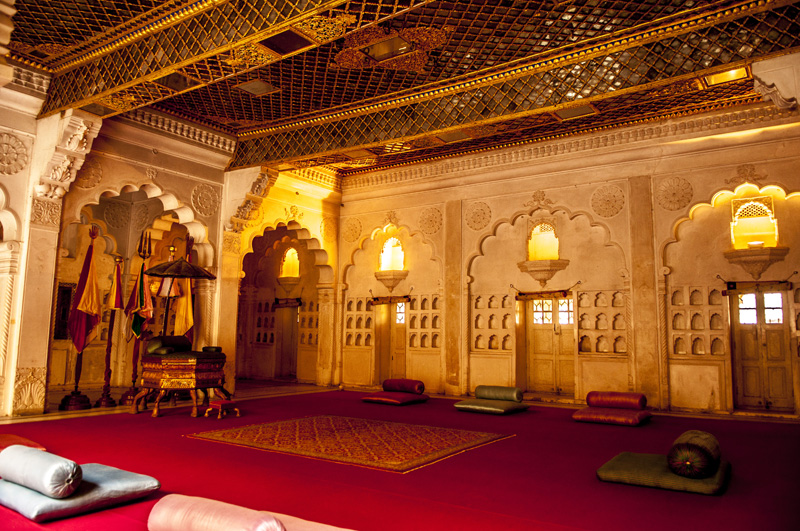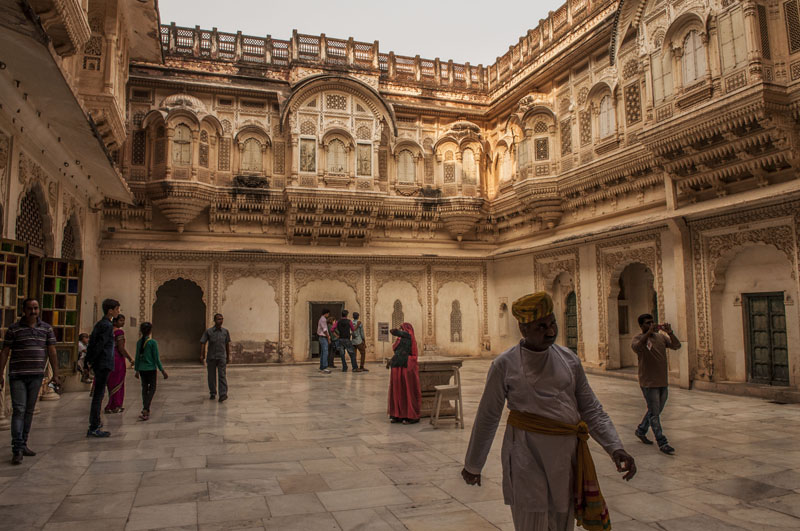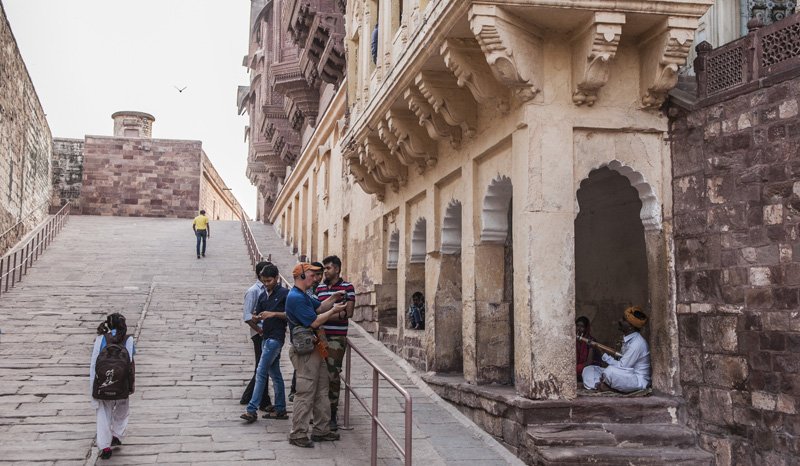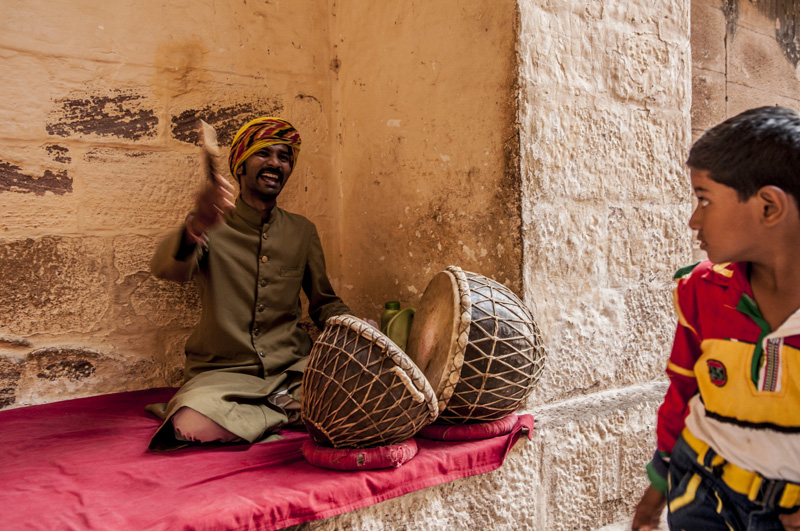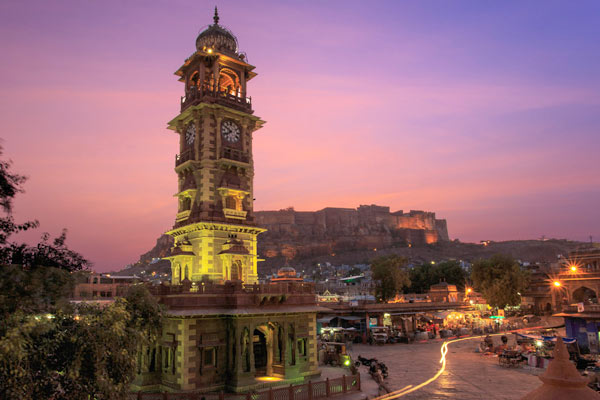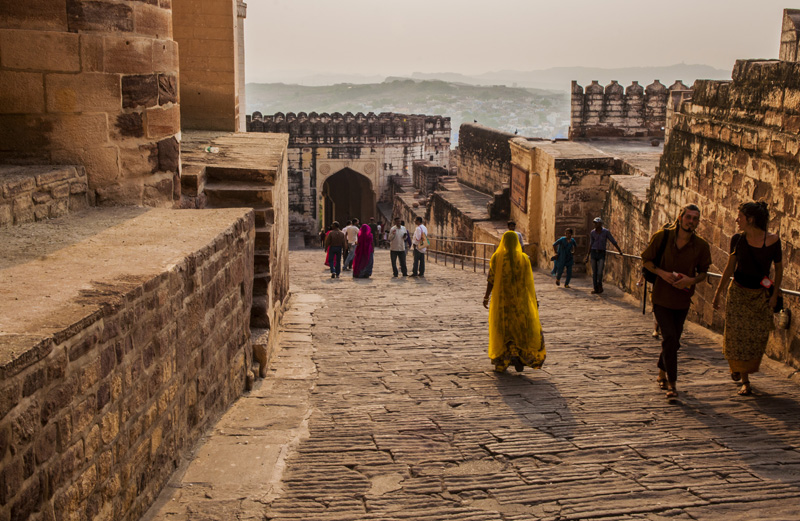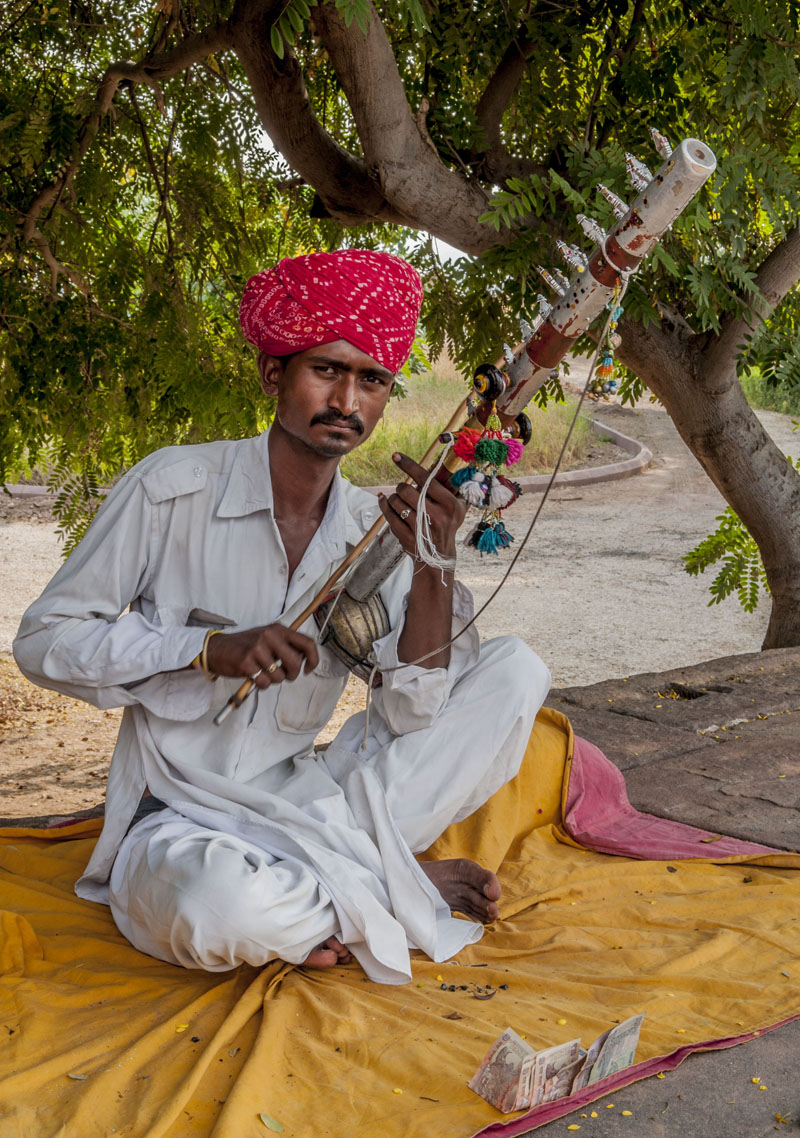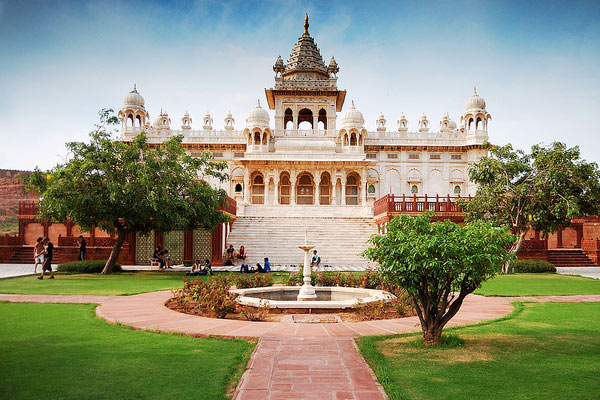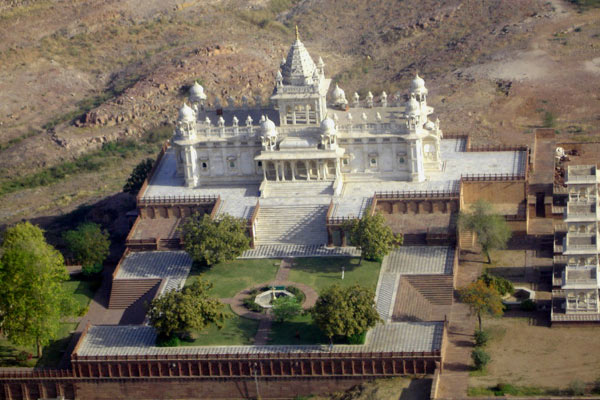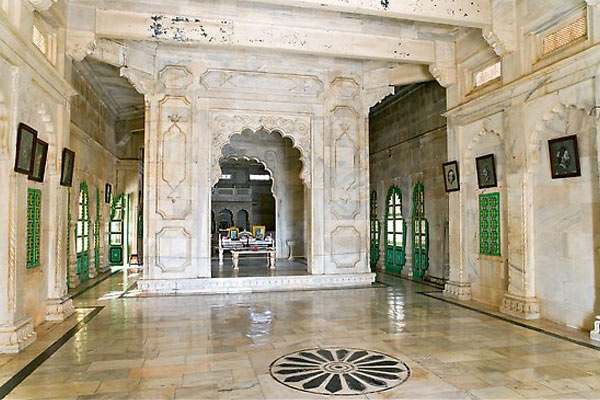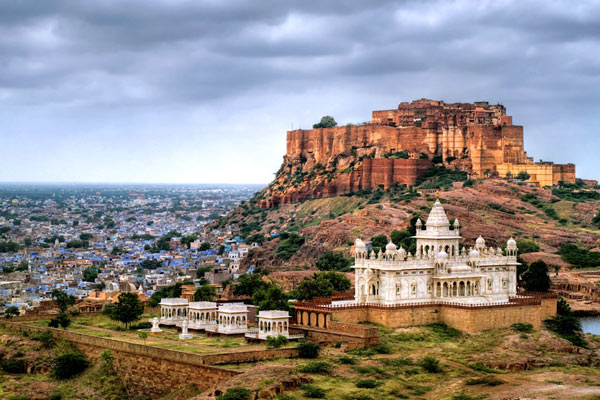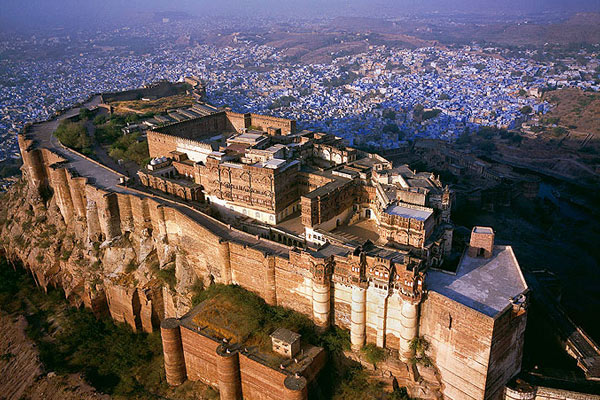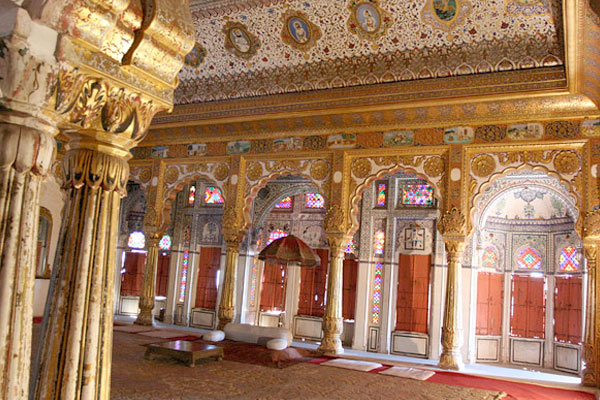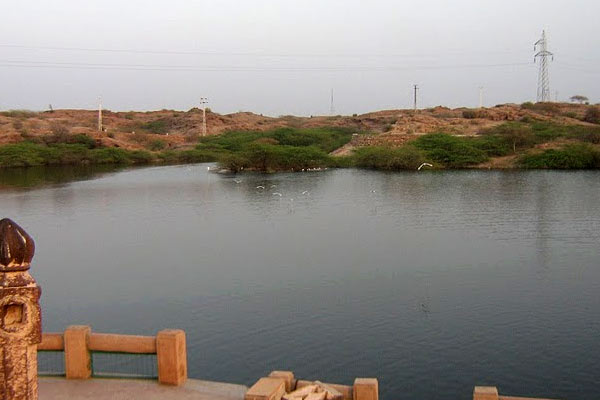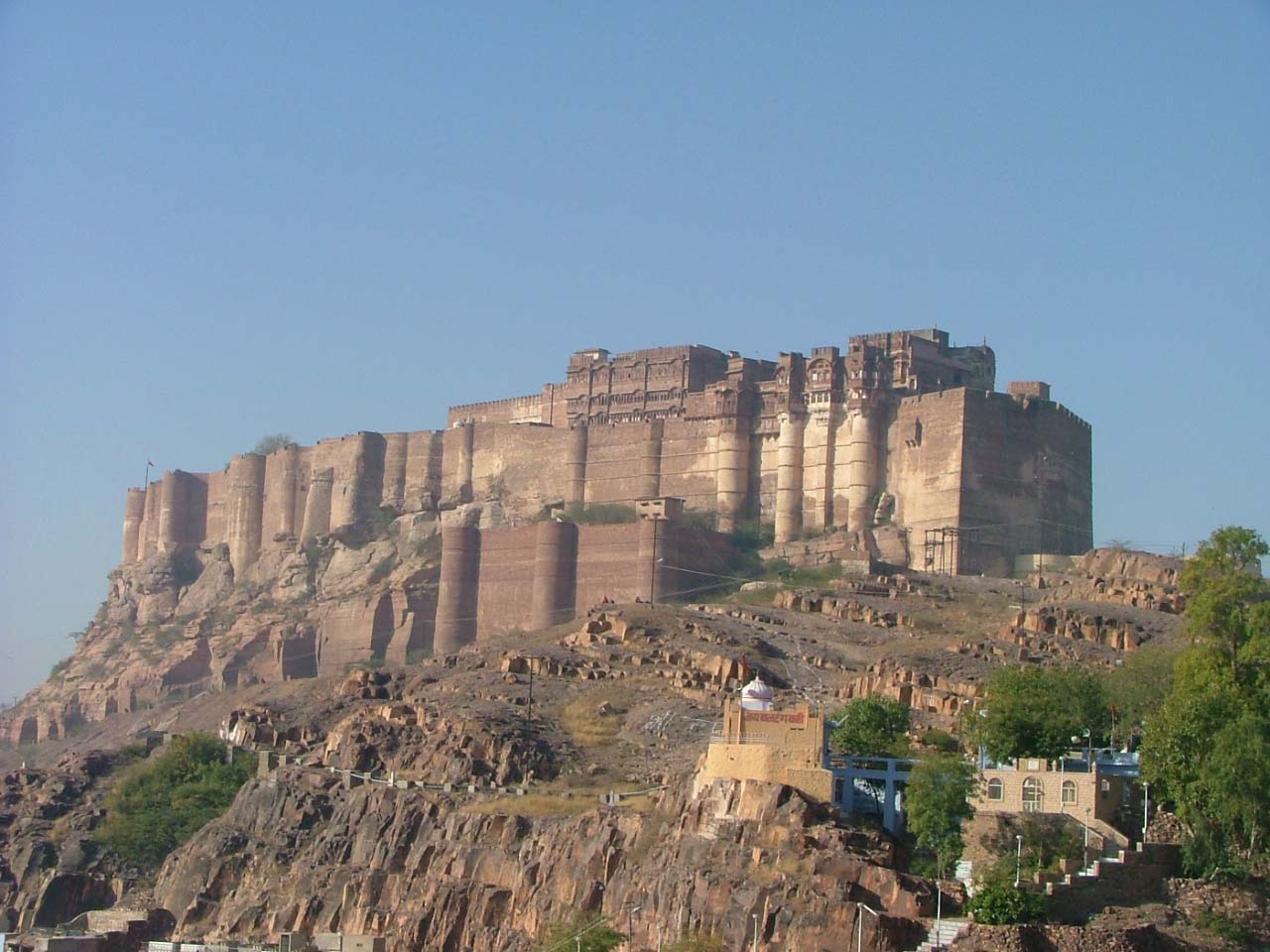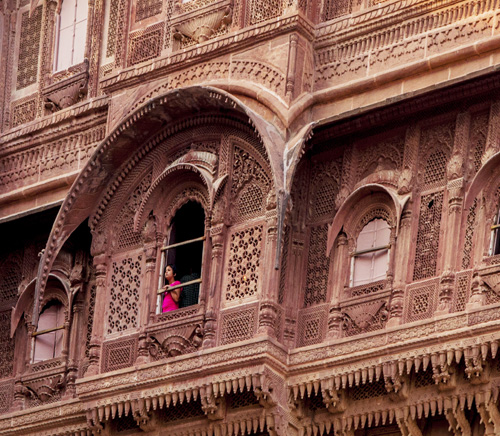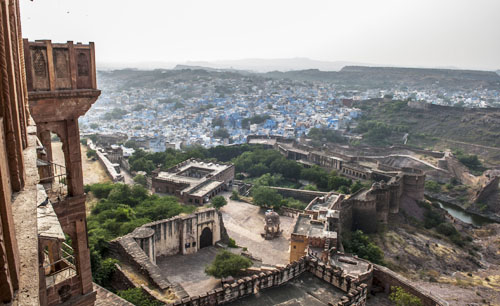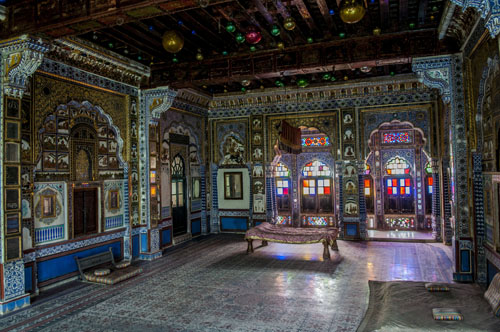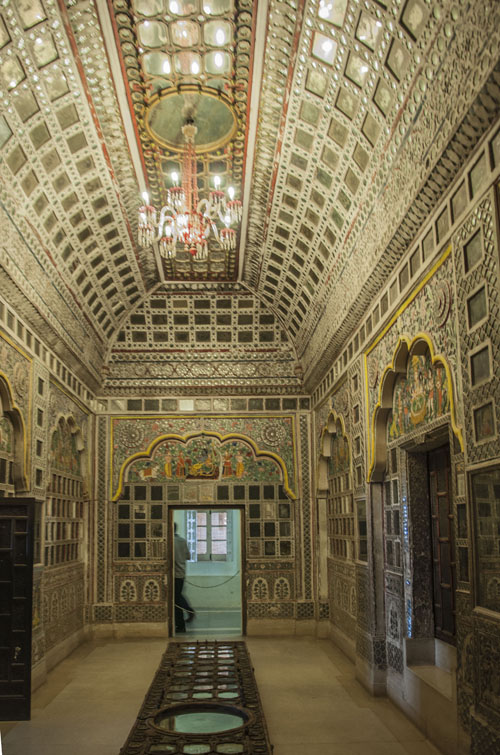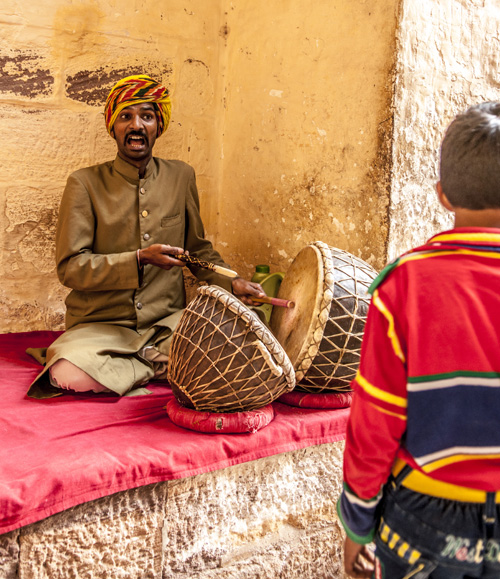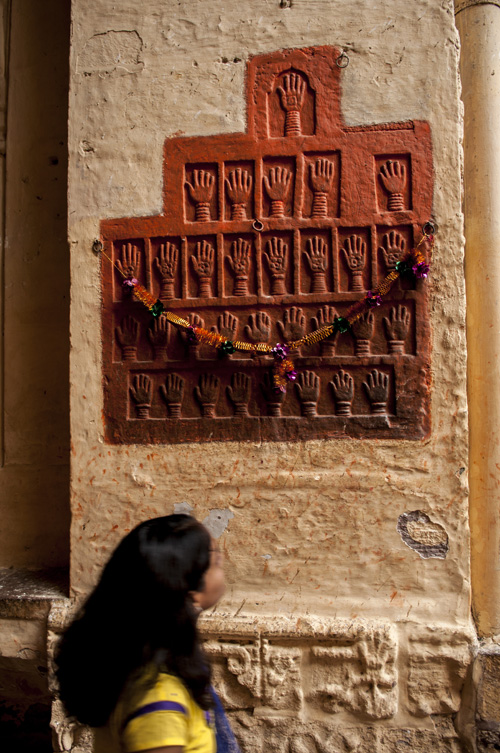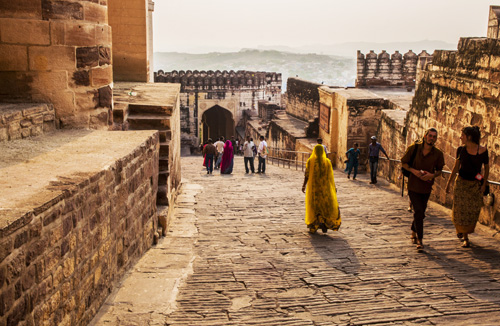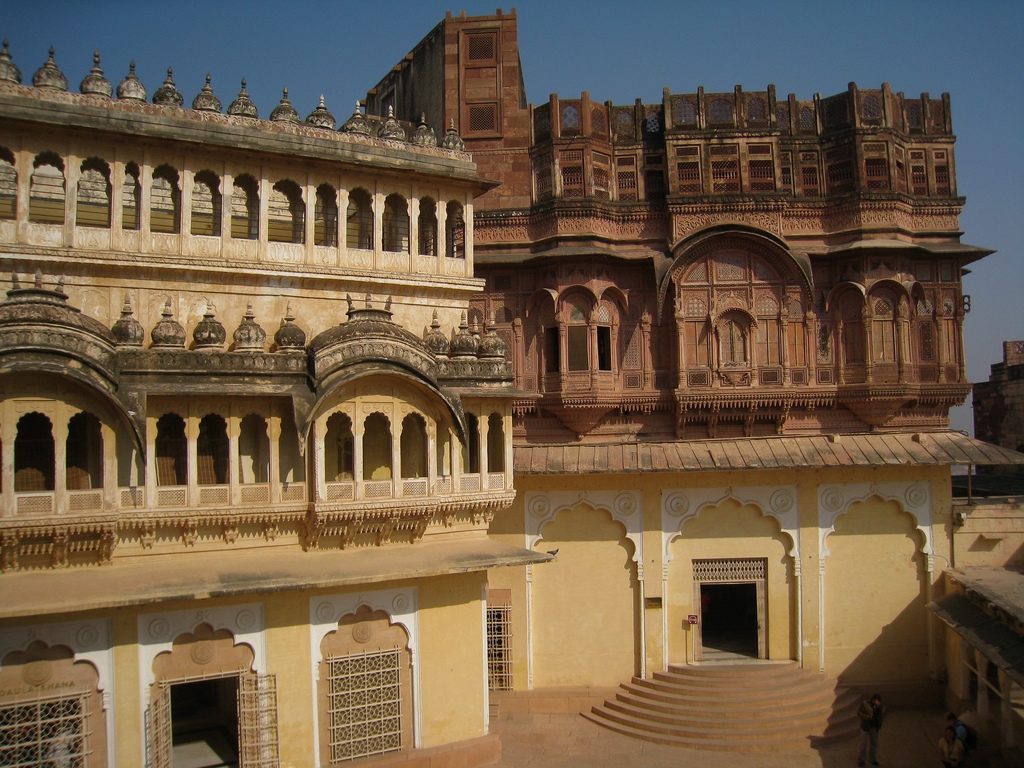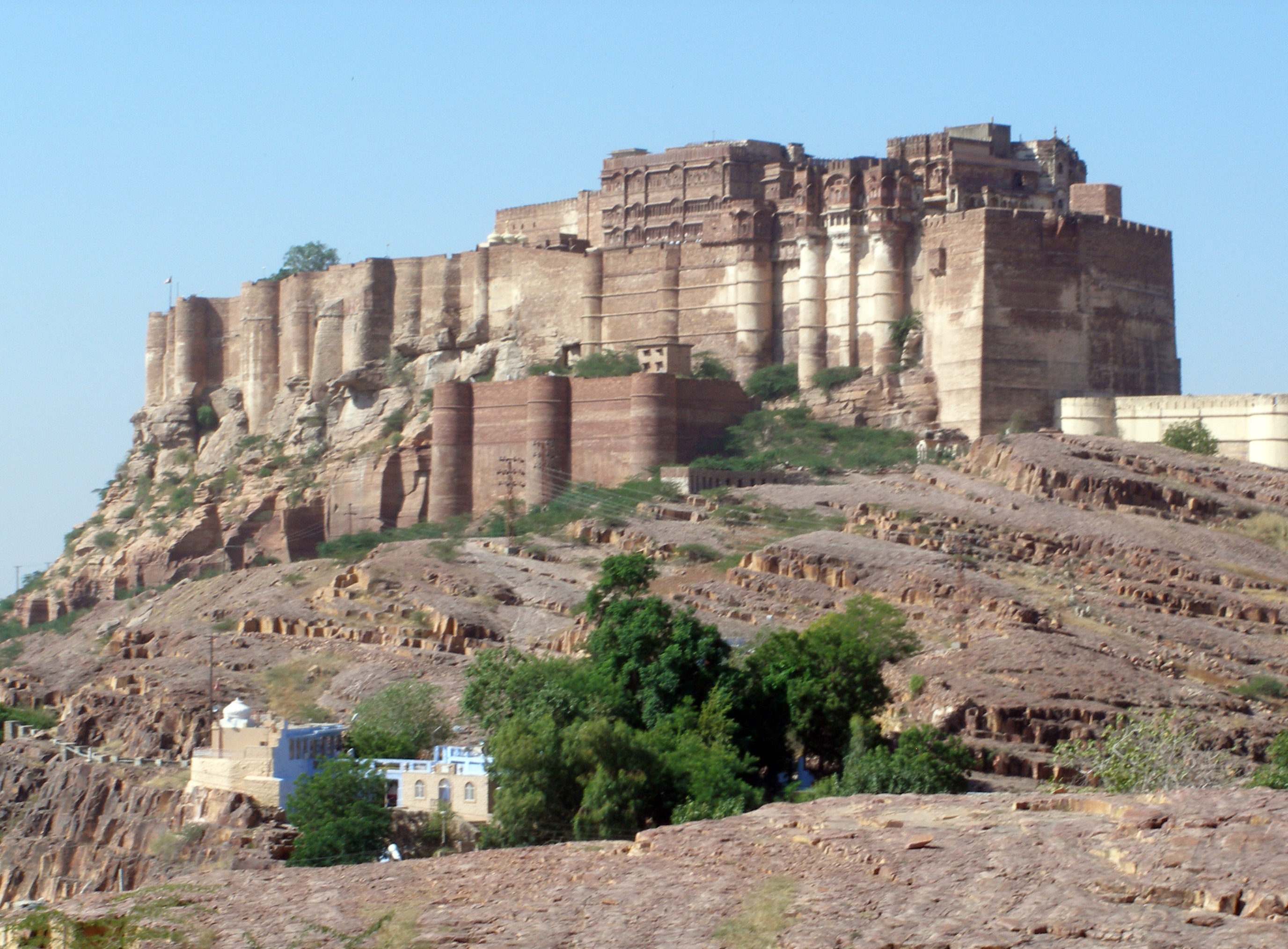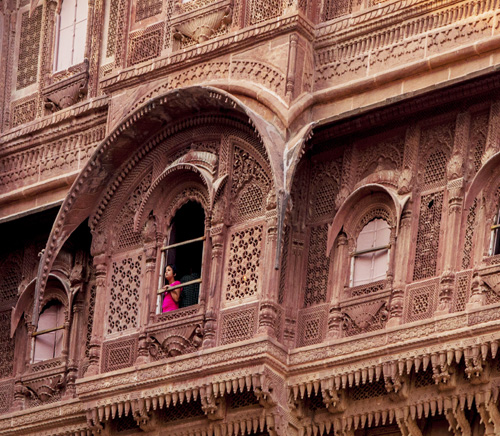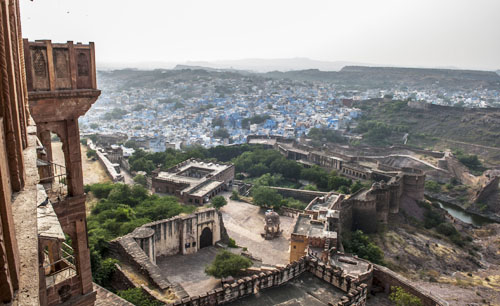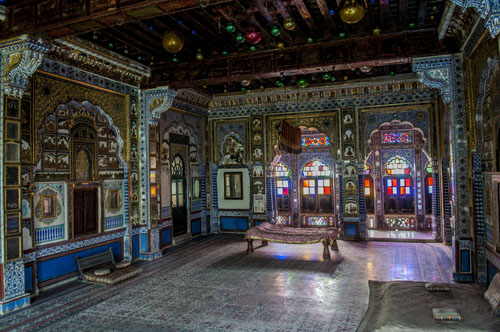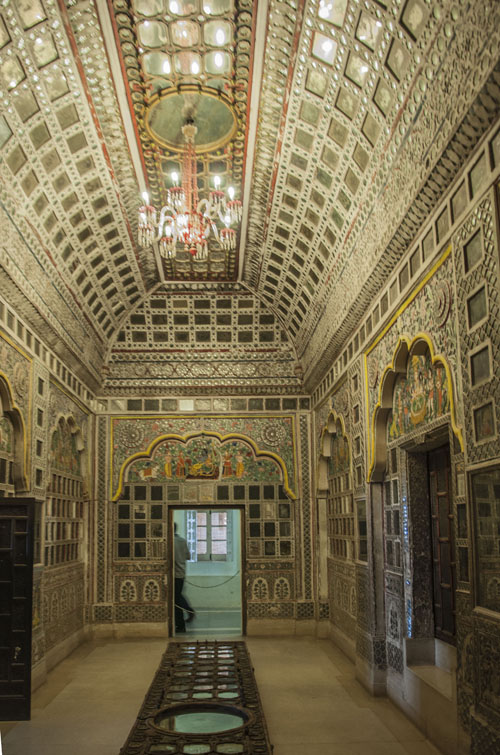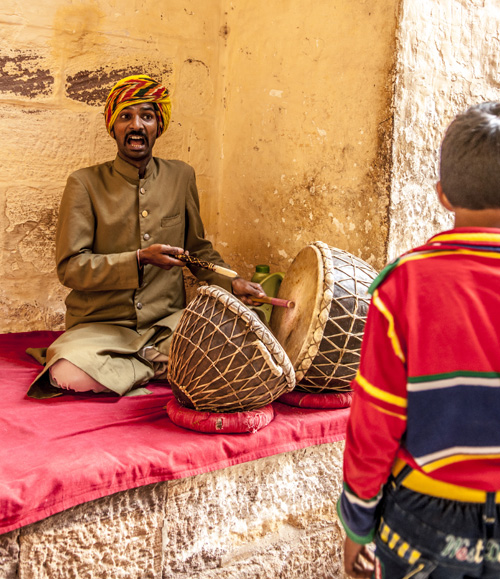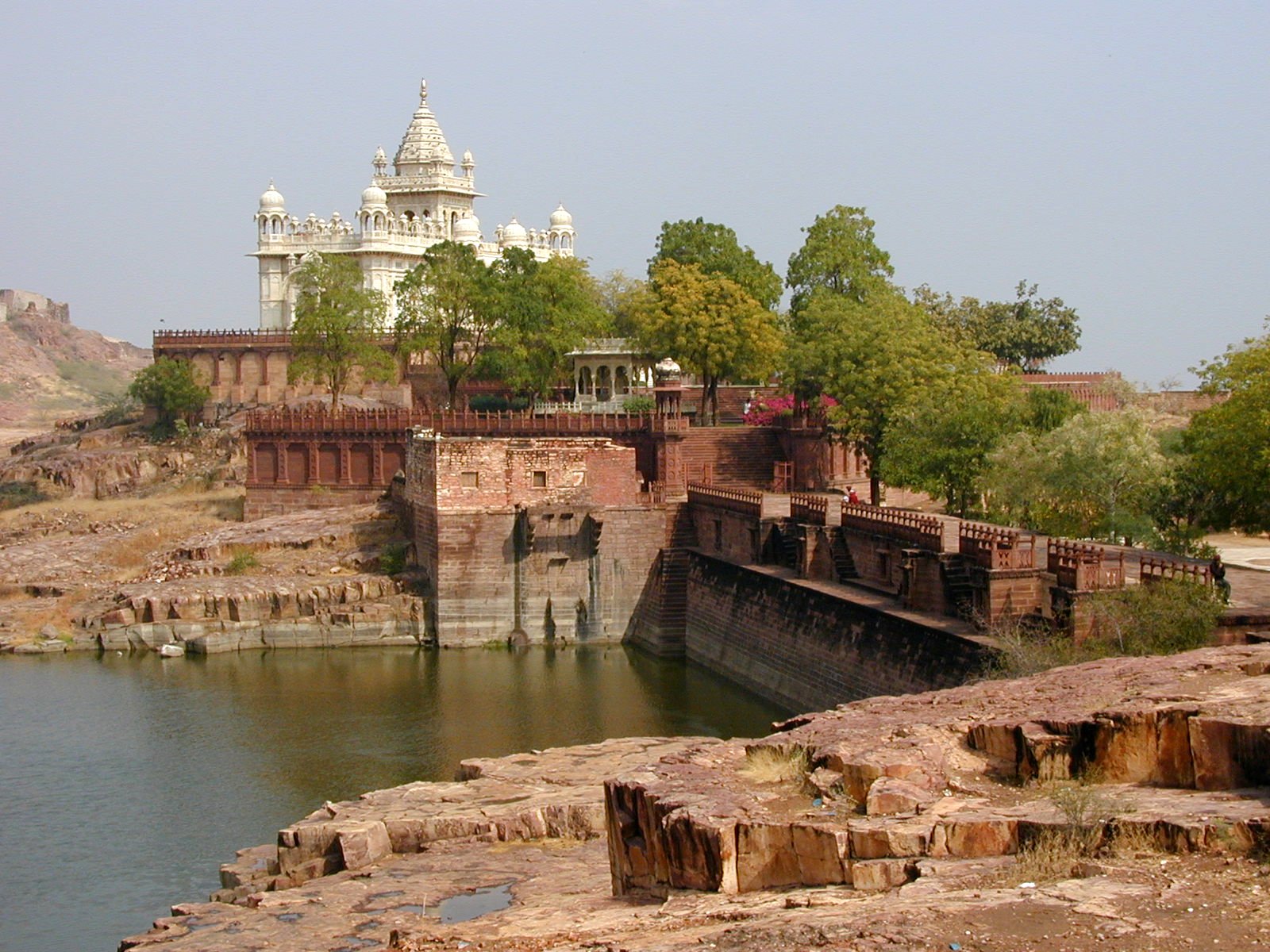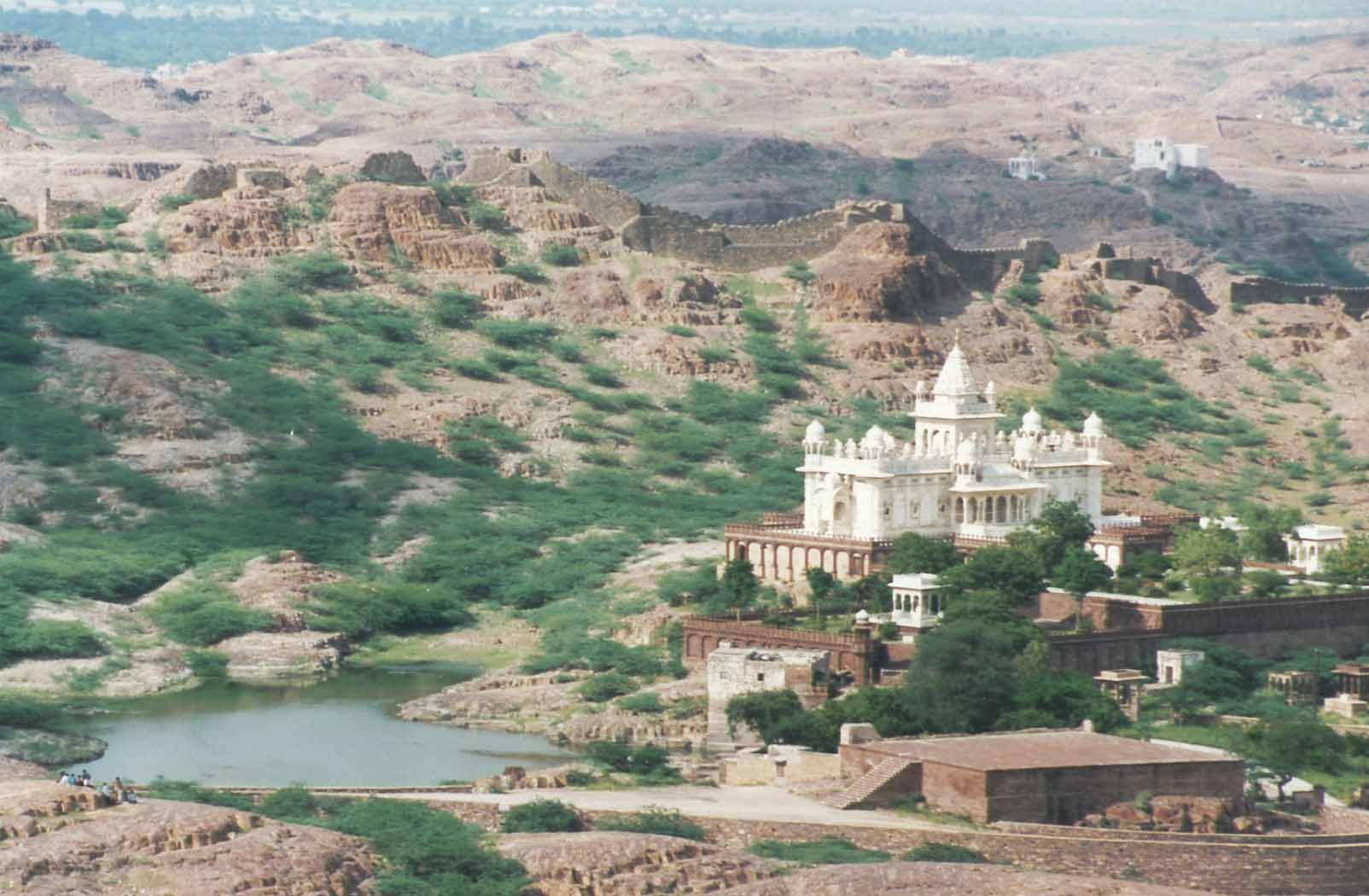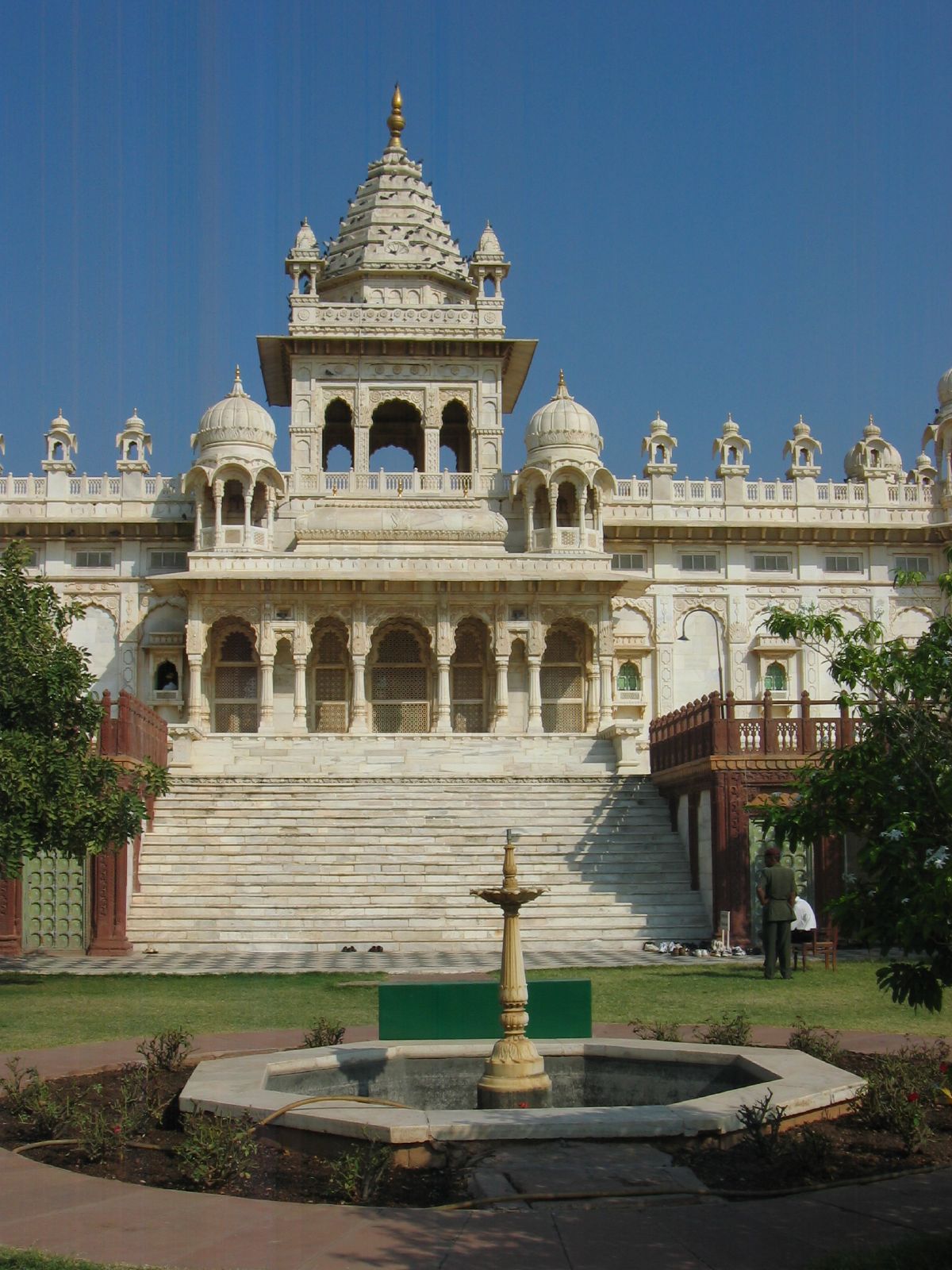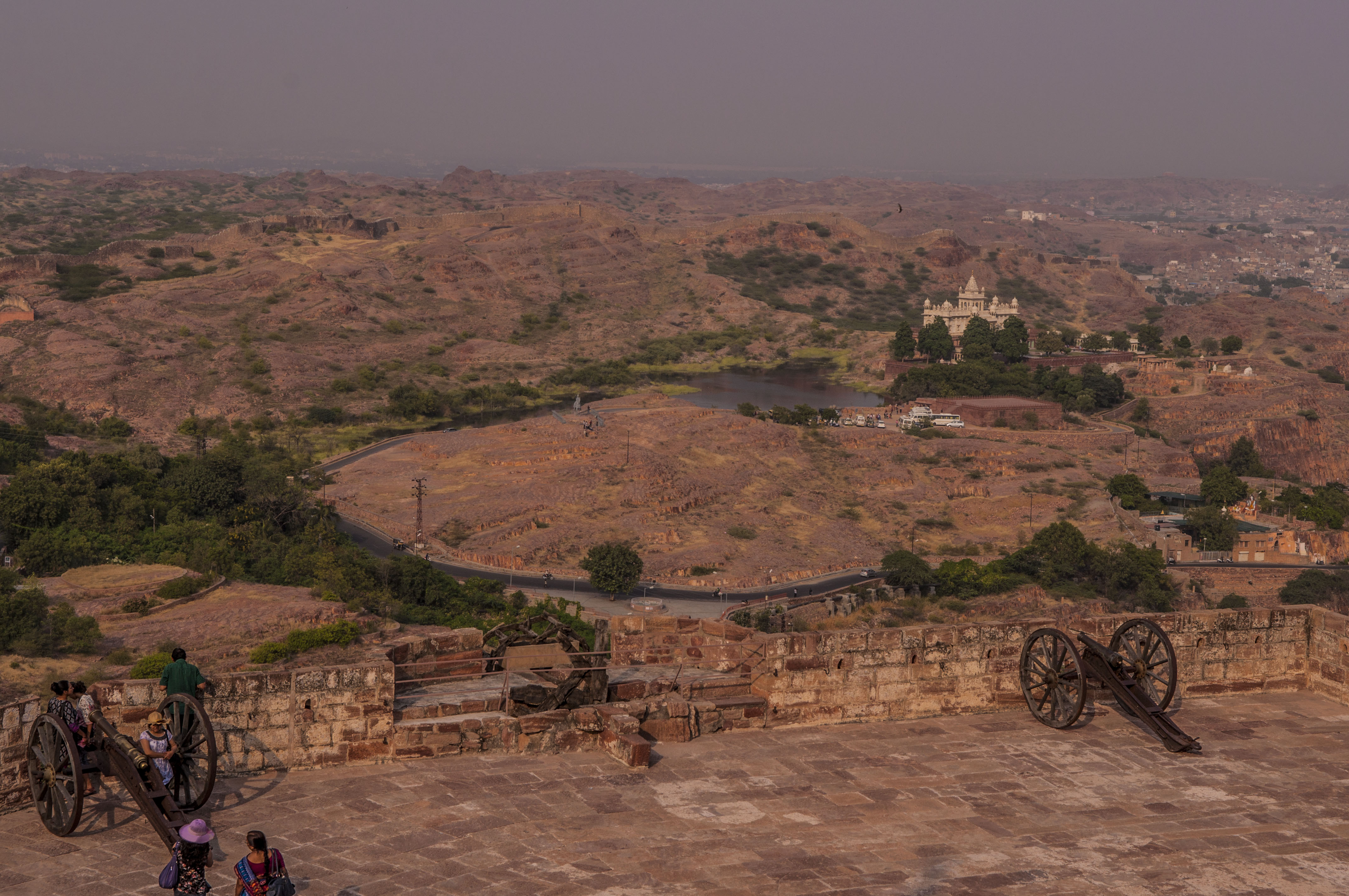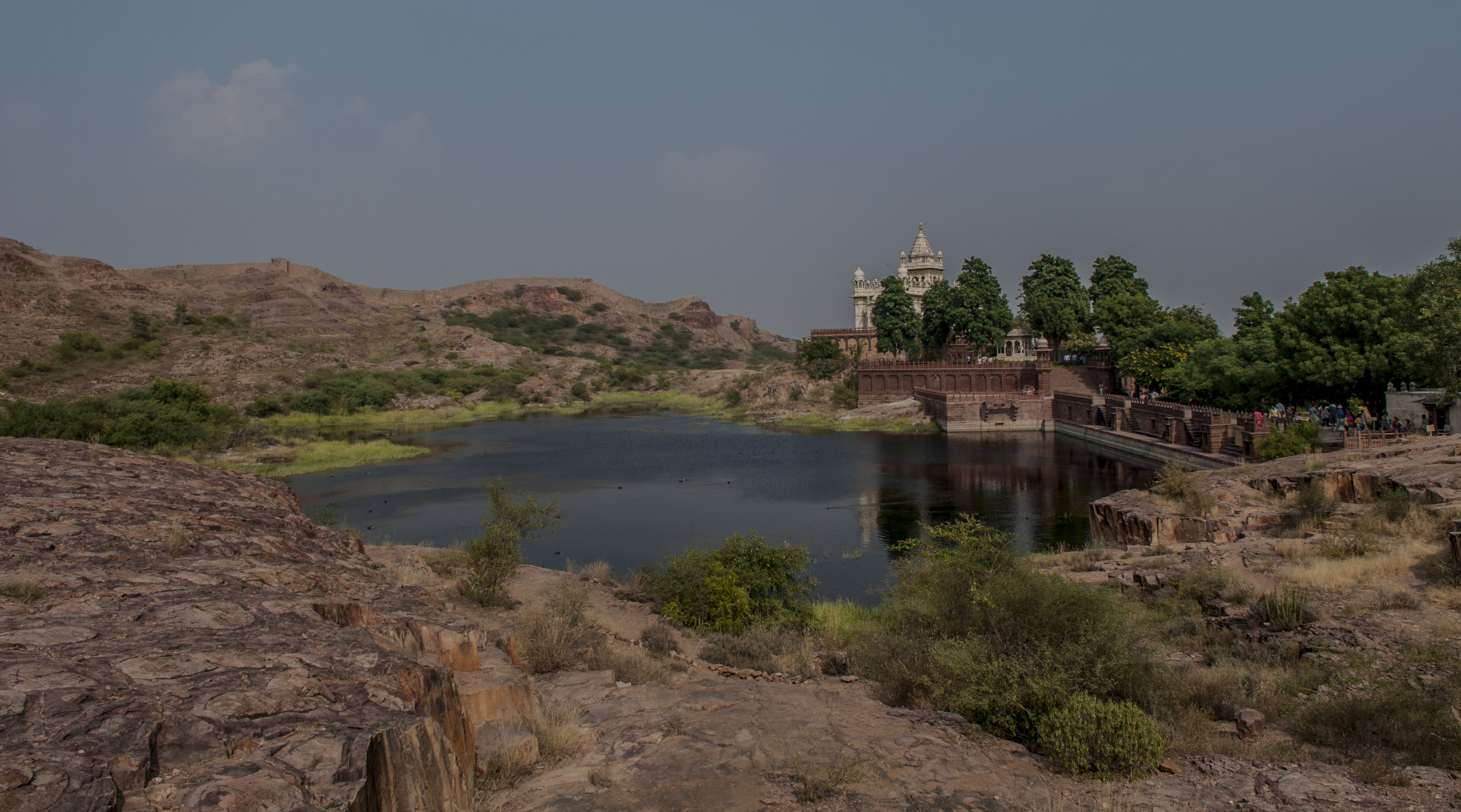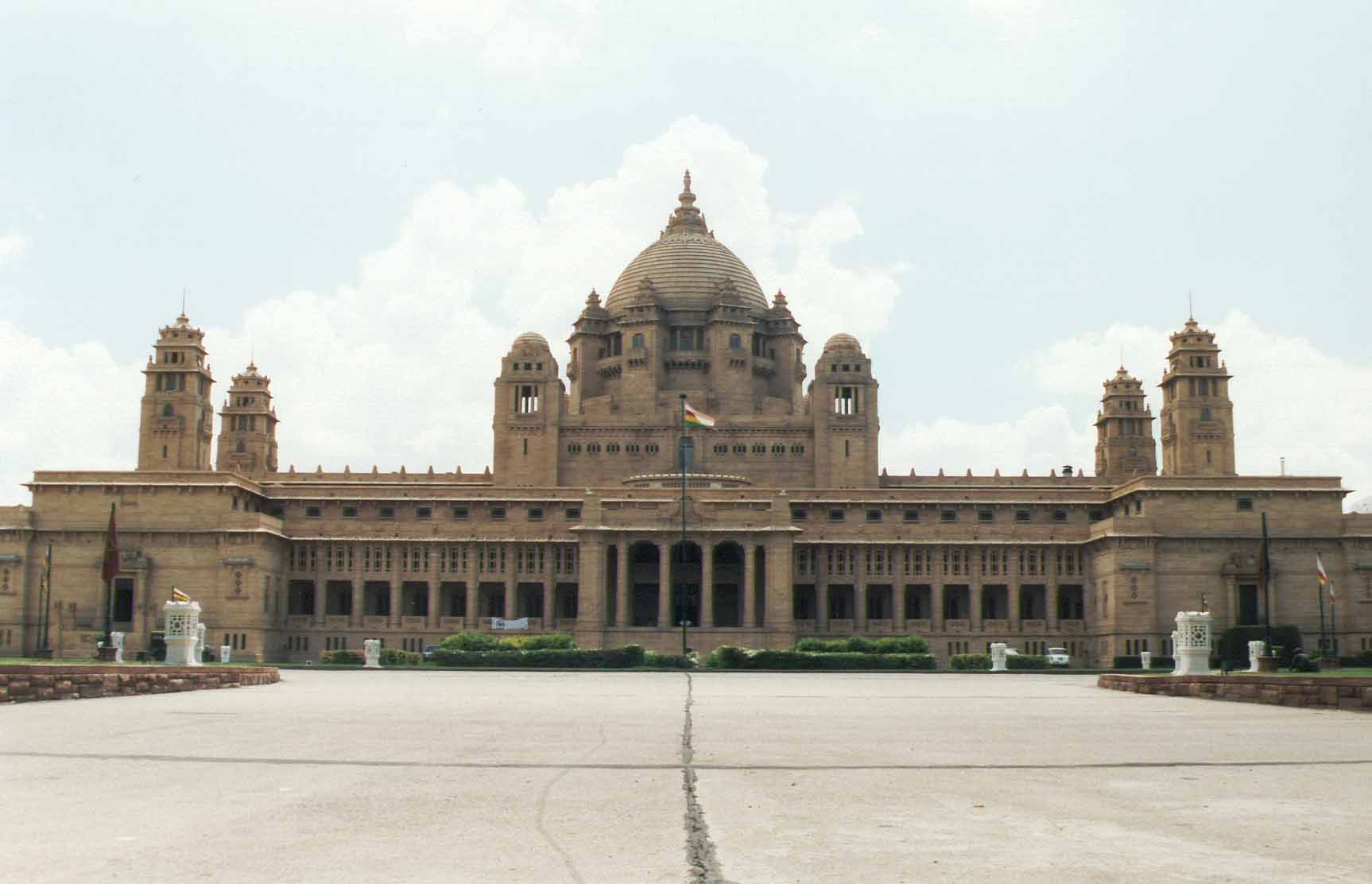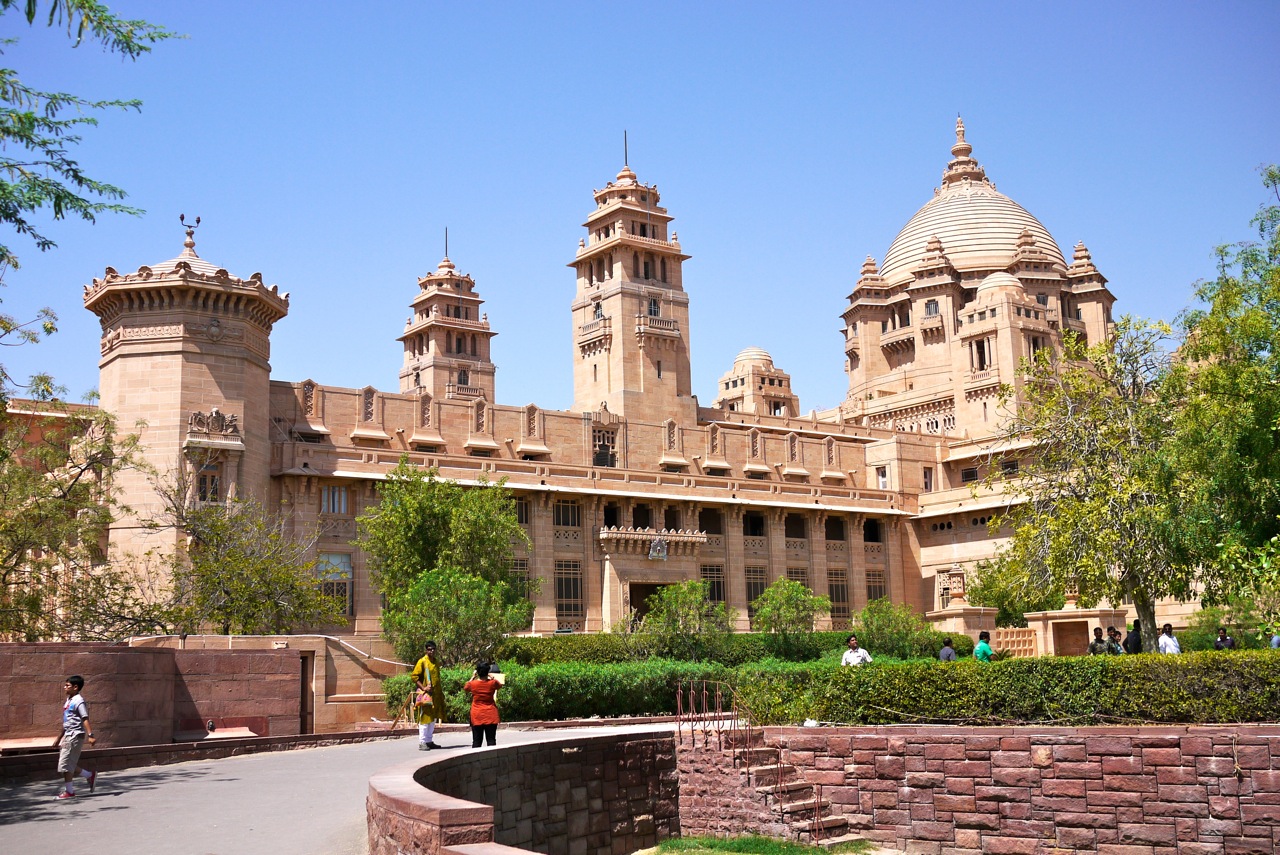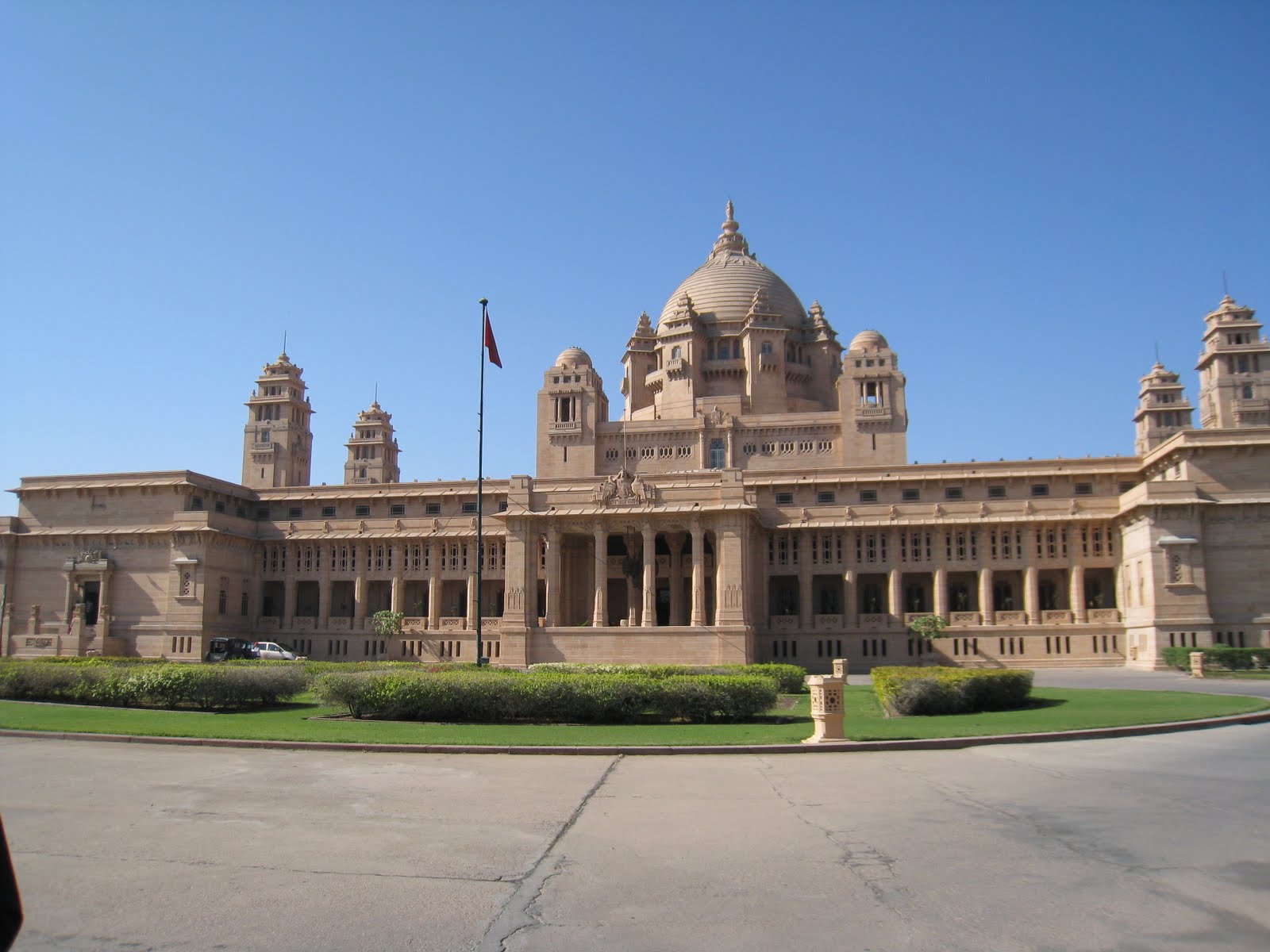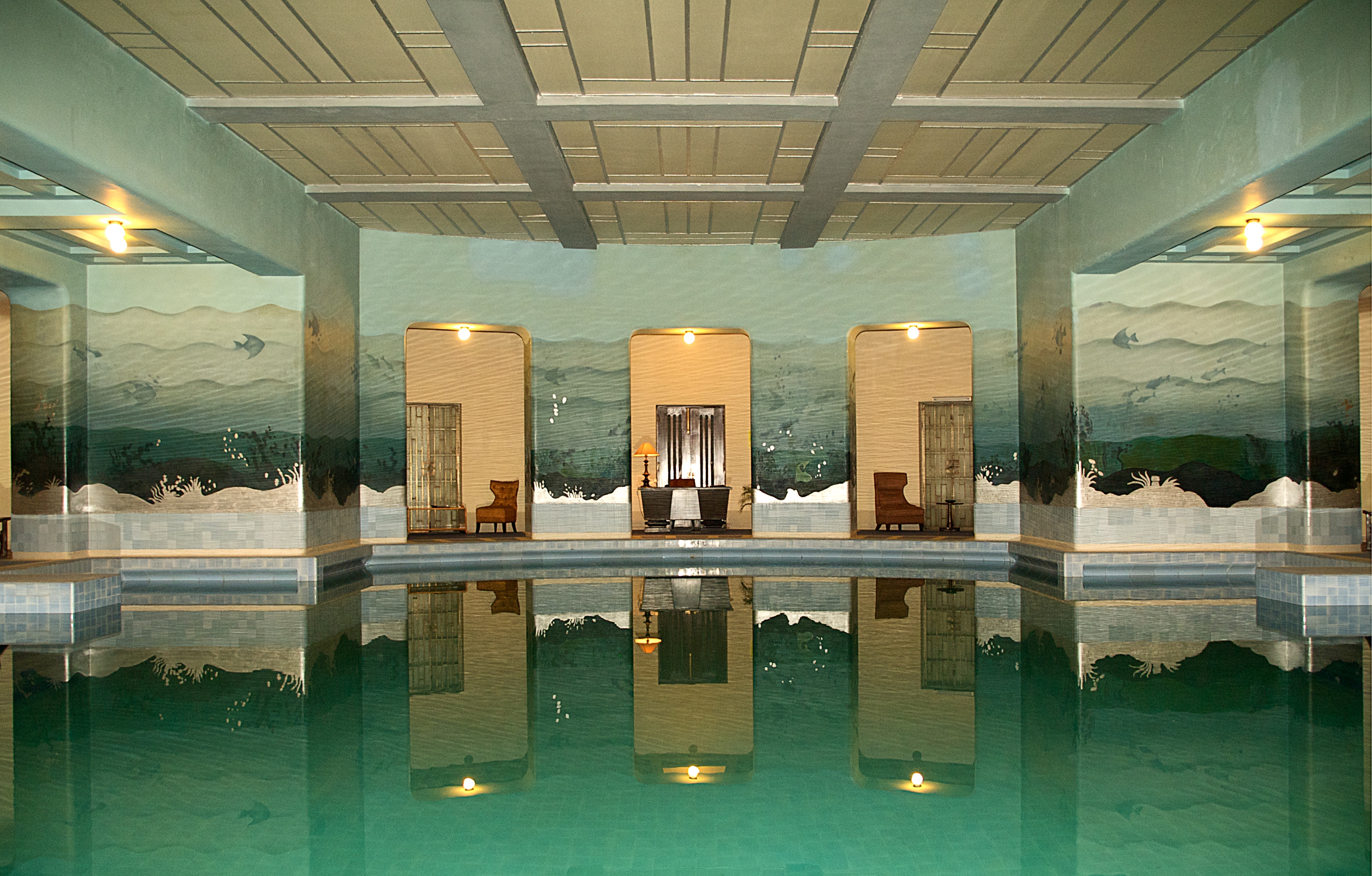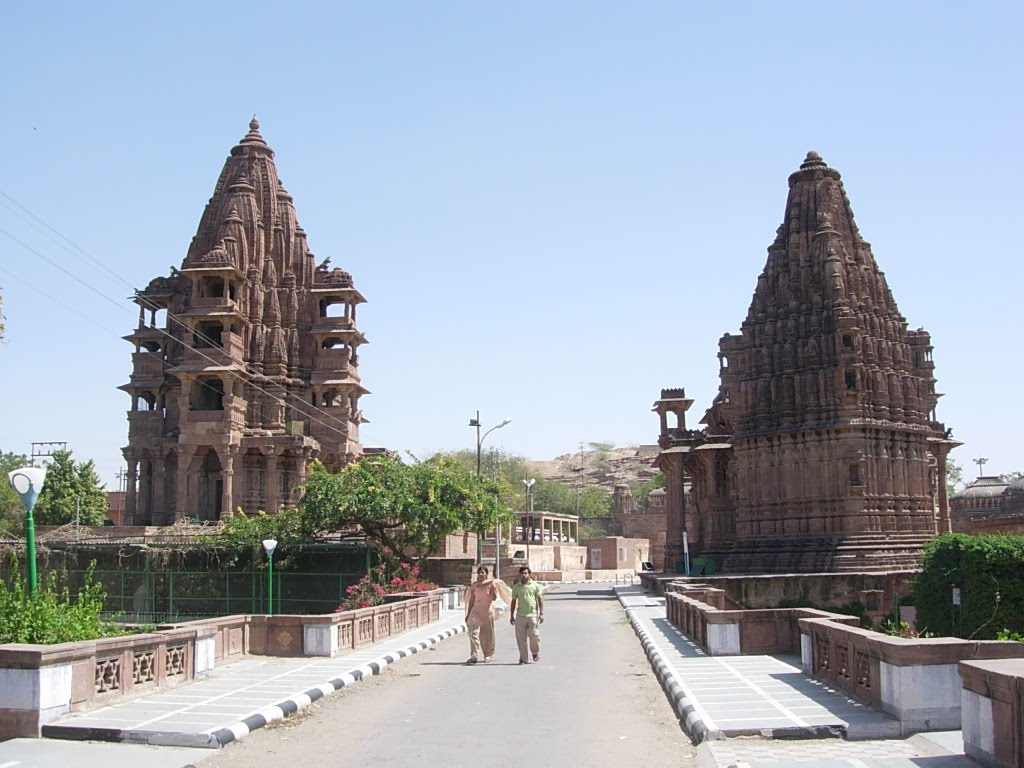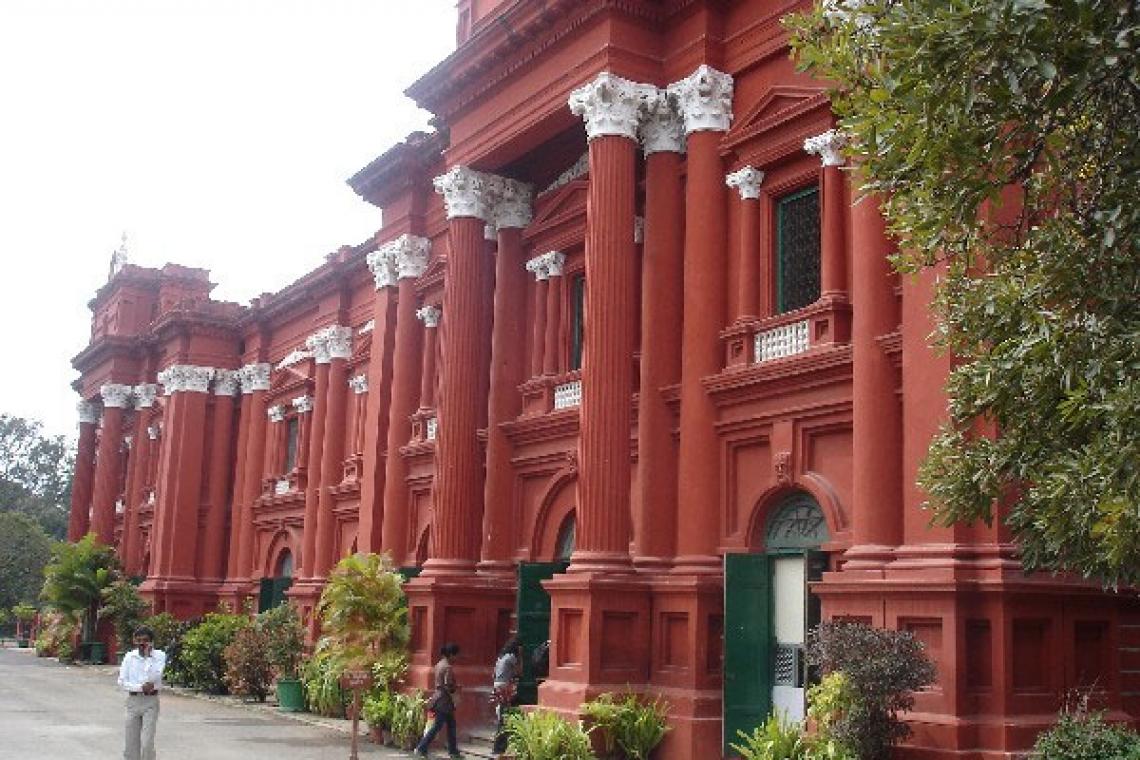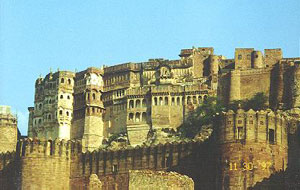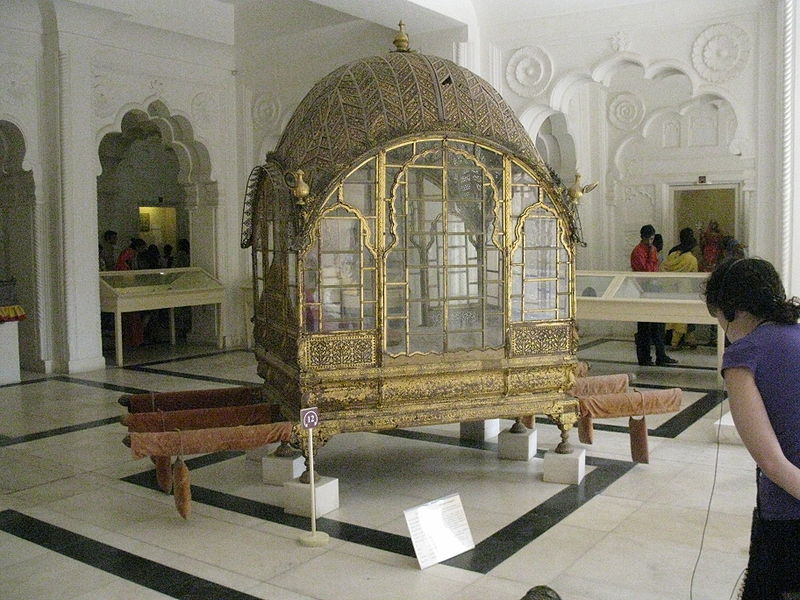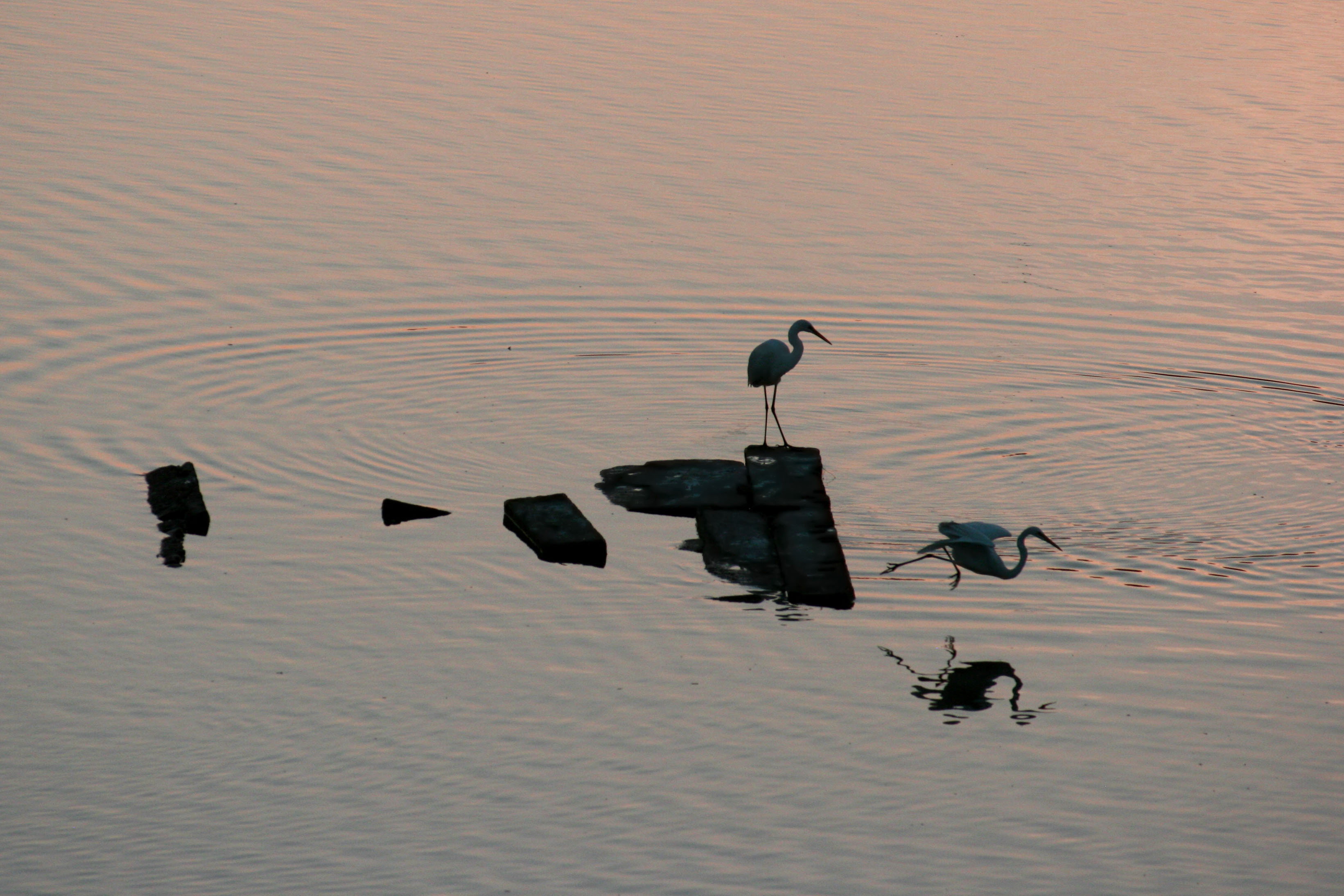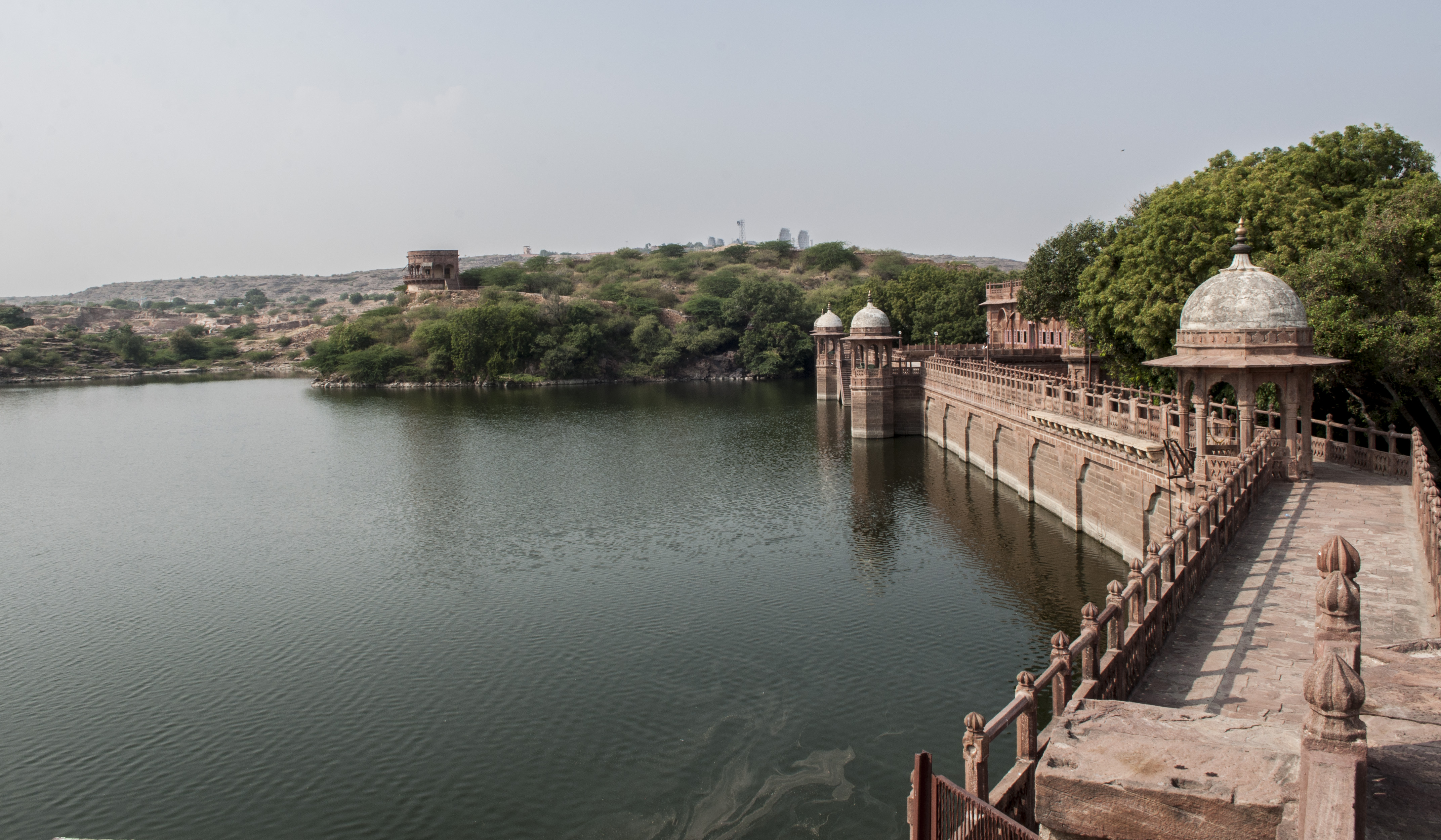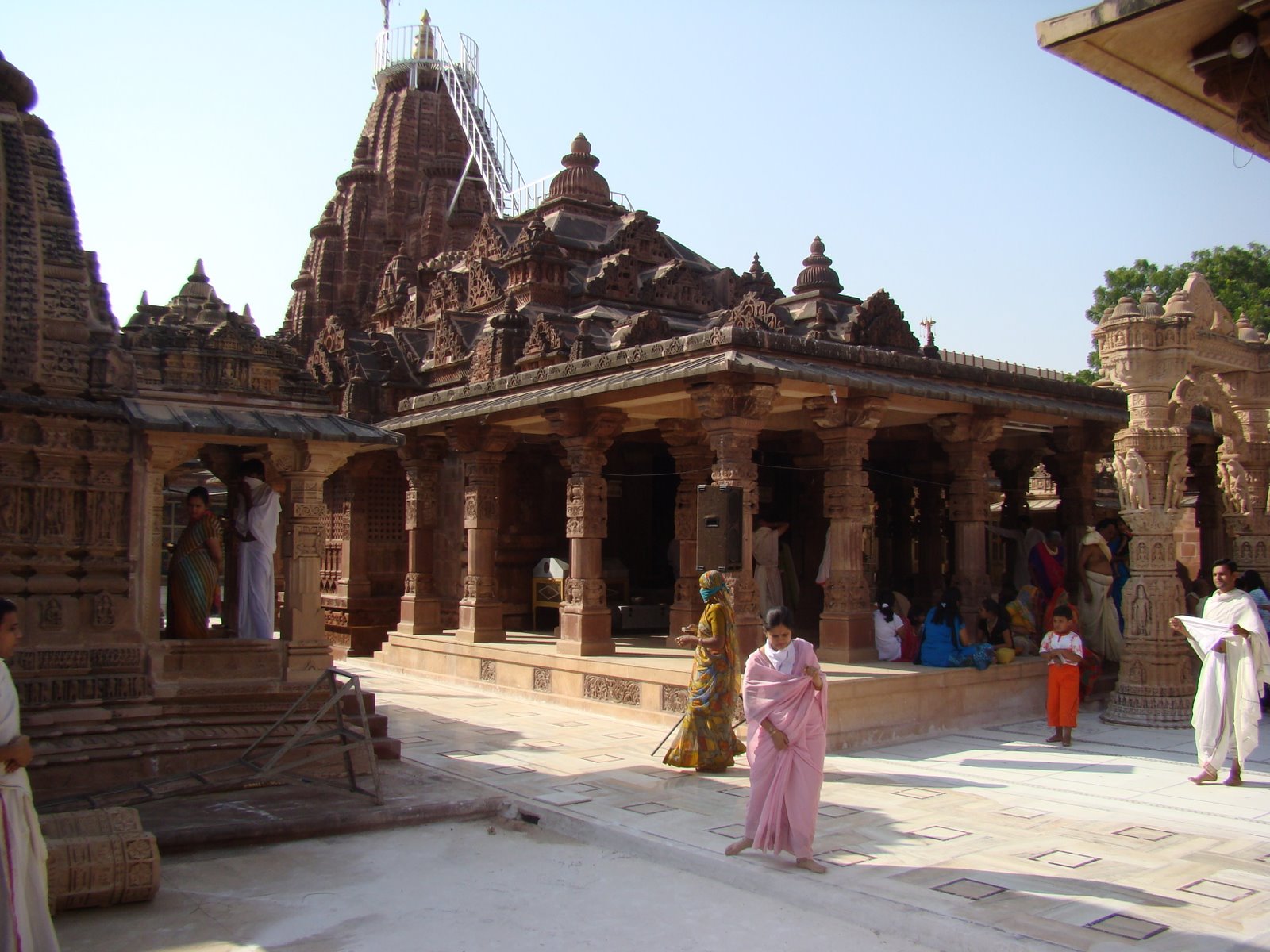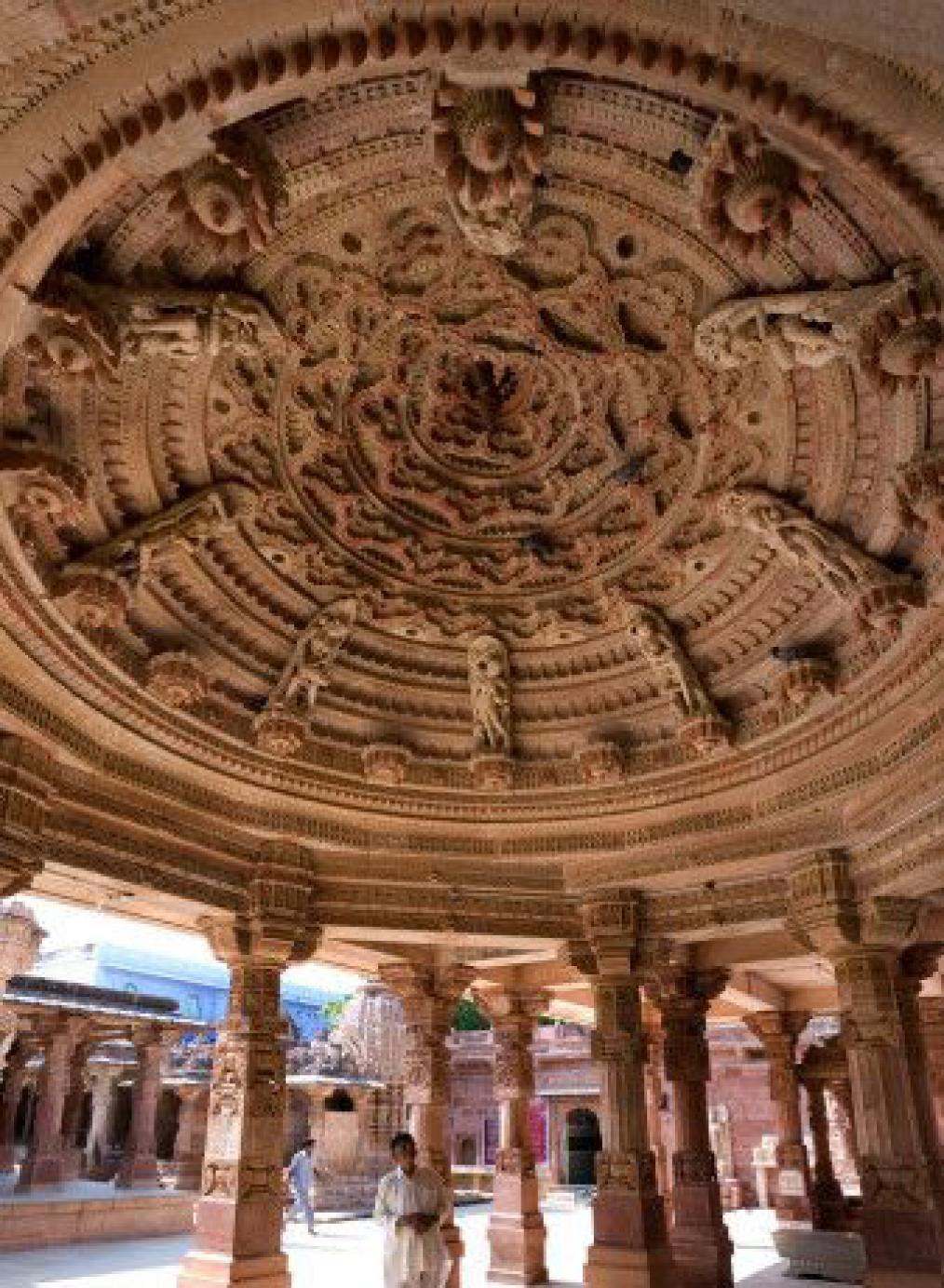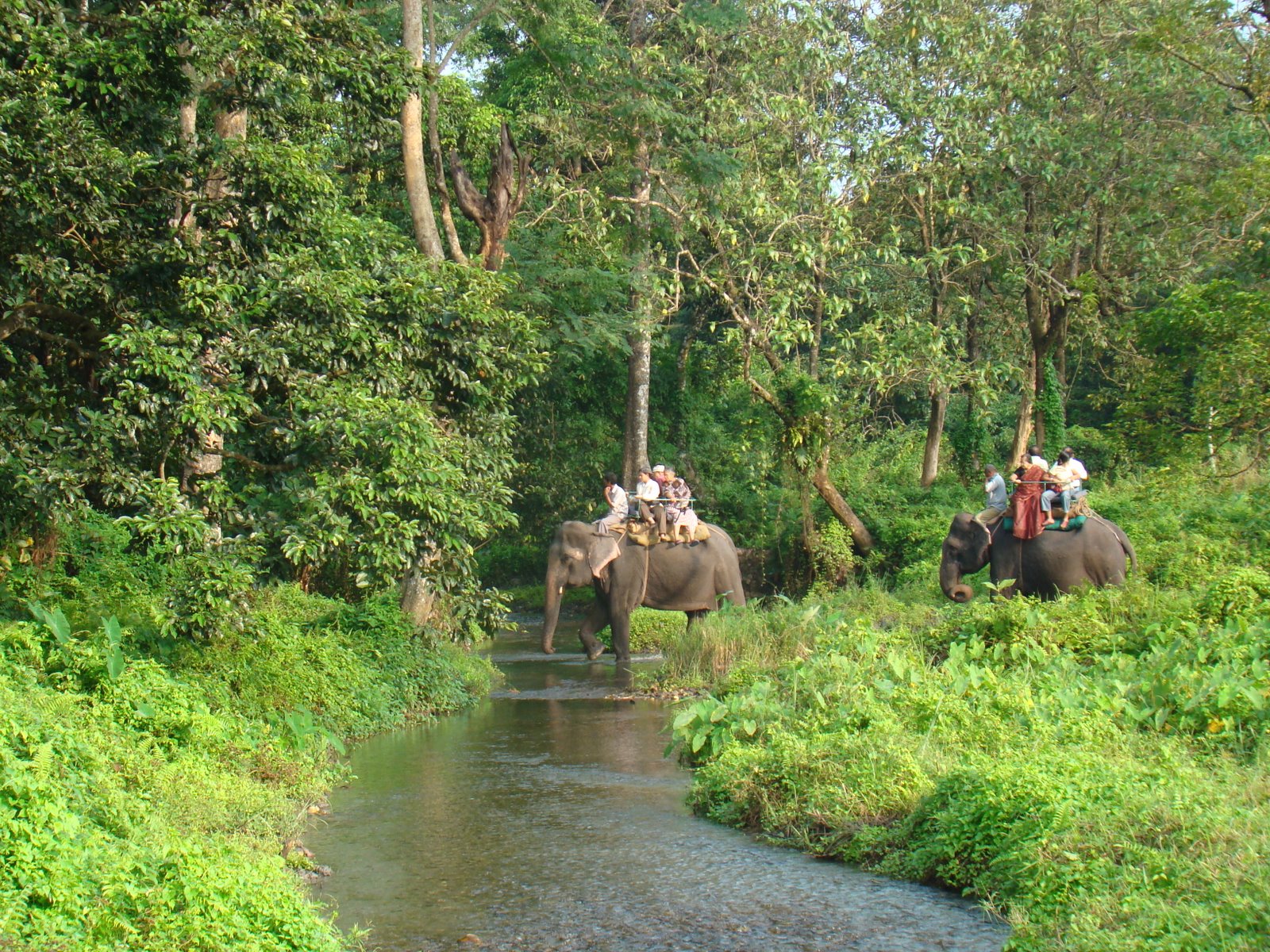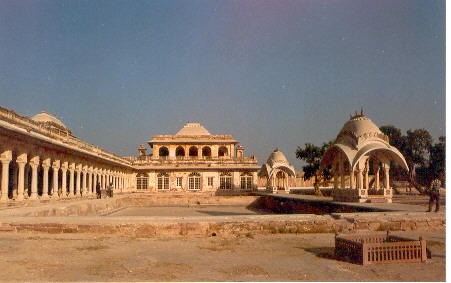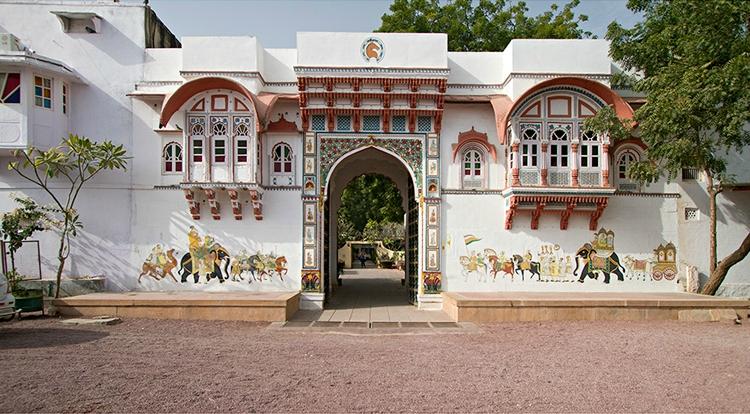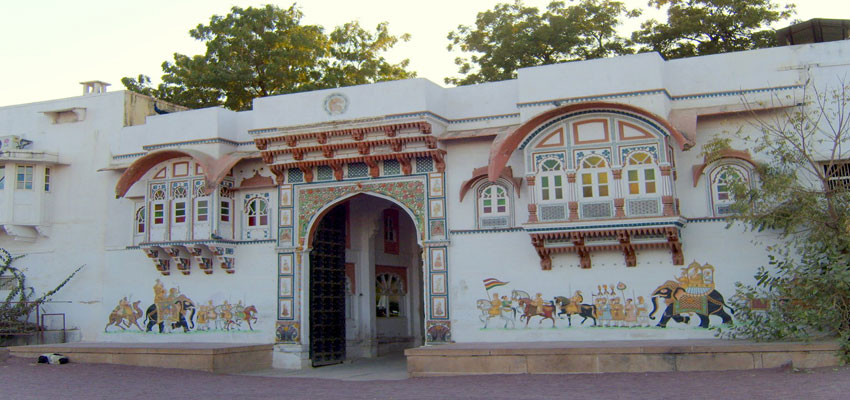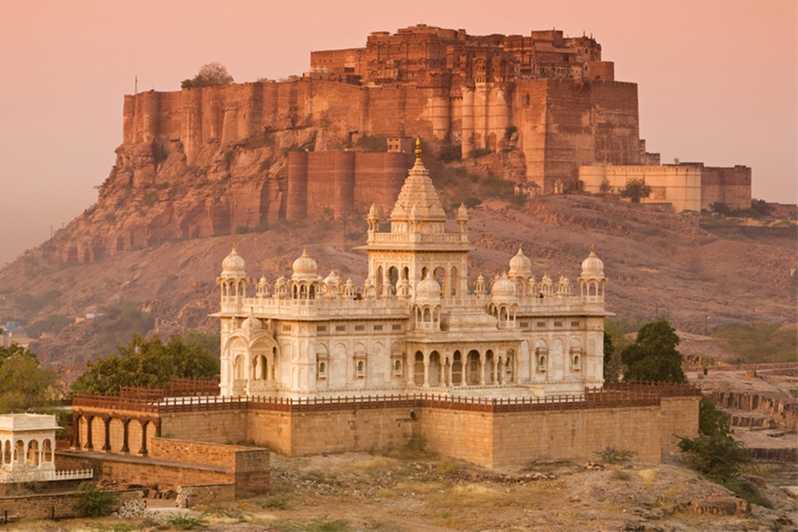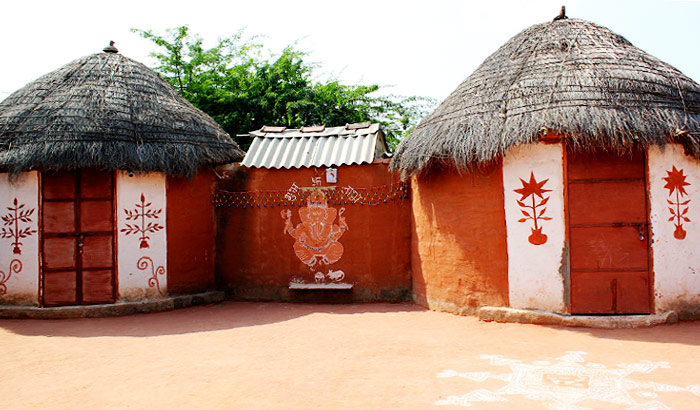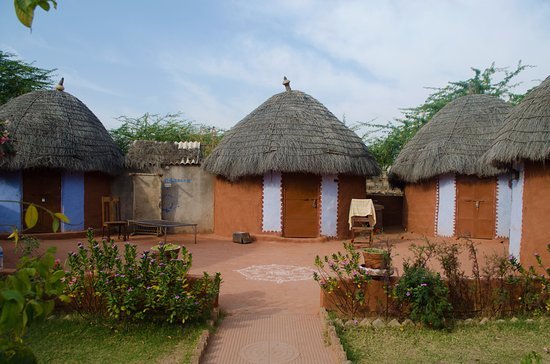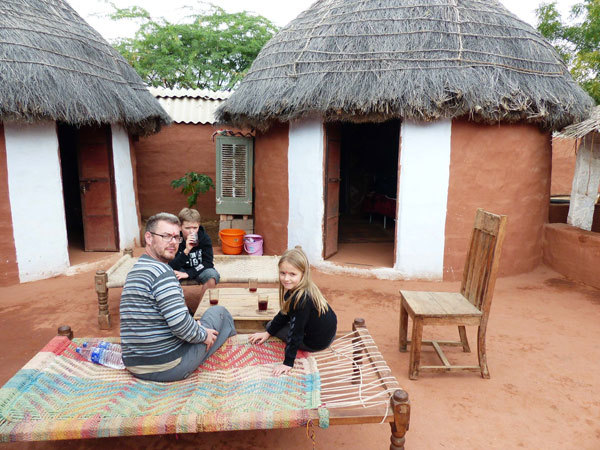Jodhpur, Tales of grandeur and Great heroes
General Information
District:JodhpurState:RajasthanCountry:IndiaArea:78.6 Sq. Km.Language Spoken:Marwari, Rajasthani, Hindi.Long Distance Code:+91-291Importance:Famous for the Mehrangarh fort and known as the blue city.Best Time To Visit:November to MarchDescription:
Amidst the sand dunes and thorny vegetation, towers a 120 mtr high fort above the plain. It overlooks the city. The old city is surrounded by a wall with 8 gates for the entrance. The new city is settled around this walled area. The Maruthal or land of death came to life when Rathores of Kanauj moved in, but the city was actually founded by Rao Jodhaji in 1459 A.D. He was the chief of the Rathore clan of Rajputs who claimed to be the descendant of Rama, the epic hero of Ramayana.Location:
Jodhpur is the second largest city of Rajasthan. It is situated on the western border of India, on the edge of the Thar desert.
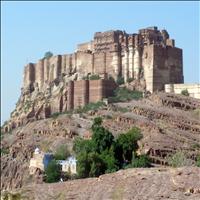 In the heart of city of Jodhpur, stands the 125 mtrs high Meherangarh fort spread over 5 sq. km. This once invincible fort has 4 gates. The Jay pol, the Fateh pol and the Loha pol. Within the fort are magnificent palaces with marvelously carved panels, and latticed windows. They are the Moti mahal, the Sheesh mahal, the Phool mahal, the Sileh khana and the Daulat khana. These have collections of palanquins, elephant's howdas, miniature paintings, instruments, costumes, and furniture.
In the heart of city of Jodhpur, stands the 125 mtrs high Meherangarh fort spread over 5 sq. km. This once invincible fort has 4 gates. The Jay pol, the Fateh pol and the Loha pol. Within the fort are magnificent palaces with marvelously carved panels, and latticed windows. They are the Moti mahal, the Sheesh mahal, the Phool mahal, the Sileh khana and the Daulat khana. These have collections of palanquins, elephant's howdas, miniature paintings, instruments, costumes, and furniture.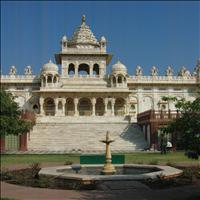 A cluster of royal cenotaphs in white marble built in 1899 A.D. in the memory of Maharaja Jaswant Singh -II. Within the main cenotaph are the portraits of the Jodhpur rulers. A story goes that Maharaja Jaswant Singh succumbed to injuries while fighting in a battle against the Mughal king Jehangir at this very place.
A cluster of royal cenotaphs in white marble built in 1899 A.D. in the memory of Maharaja Jaswant Singh -II. Within the main cenotaph are the portraits of the Jodhpur rulers. A story goes that Maharaja Jaswant Singh succumbed to injuries while fighting in a battle against the Mughal king Jehangir at this very place.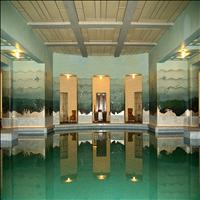 Also known as the Chhittar place, because of the particular sand stone used, this palace was built by Umaid Singh. This is the only 20th century palace built under the famine relief project that gave employment to famine struck population. It was built in 16 years. A part of the palace has been converted into hotel, one part is the museum and the remaining is still occupied by the royal family.
Also known as the Chhittar place, because of the particular sand stone used, this palace was built by Umaid Singh. This is the only 20th century palace built under the famine relief project that gave employment to famine struck population. It was built in 16 years. A part of the palace has been converted into hotel, one part is the museum and the remaining is still occupied by the royal family.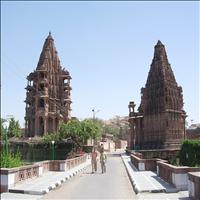 The ancient capital of Marwars has cenotaphs of the Jodhpur rulers. The highlight of this place is the Hall of Heroes which houses 16 gigantic figures chiseled out of single rock. The statues are either of popular Hindu deities or famous folk deities. Devals or the royal cenotaphs in the form of temples were built in the memory of Maharaja Jaswant Singh and Ajit Singh. They reflect the glory of Marwar.
The ancient capital of Marwars has cenotaphs of the Jodhpur rulers. The highlight of this place is the Hall of Heroes which houses 16 gigantic figures chiseled out of single rock. The statues are either of popular Hindu deities or famous folk deities. Devals or the royal cenotaphs in the form of temples were built in the memory of Maharaja Jaswant Singh and Ajit Singh. They reflect the glory of Marwar. The beautiful gardens with high rock terraces make it popular. The garden has a gate known as the Ajit pol which is decorated with figures of Gods and Goddesses from Indian mythology.
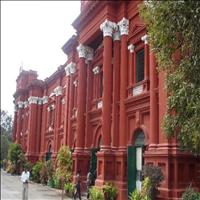 The zoo and the museum both are located in the pleasant Umaid Bhavan gardens. Old weapons, sculptures and stuffed animals can be seen here.
The zoo and the museum both are located in the pleasant Umaid Bhavan gardens. Old weapons, sculptures and stuffed animals can be seen here.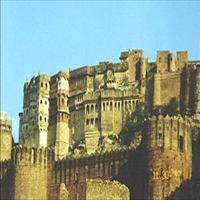 This museum has palanquins, lavishly upholstered royal howdahs, and a golden throne, shoes with pearls, paintings, mirrors, weapons and magnificently embroidered royal tent.
This museum has palanquins, lavishly upholstered royal howdahs, and a golden throne, shoes with pearls, paintings, mirrors, weapons and magnificently embroidered royal tent.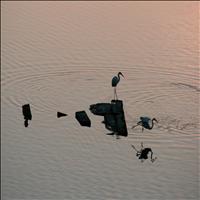 It is just five kms from Jodhpur. An artificial lake with a summer palace on its bank was built by Balak Rao Parihar in 1159 A.D.
It is just five kms from Jodhpur. An artificial lake with a summer palace on its bank was built by Balak Rao Parihar in 1159 A.D.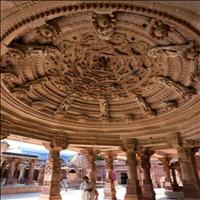 It lies 58 kms away from Jodhpur on the Bikaner highway. It is an ancient town of Thar desert with 16 ruined brahmanical and Jain temples dating back to the 8th to the 11th century. The temples have sculptural elegance and the vase and flower motifs carved on the pillars can be seen here. The most important temples are the Surya temple and the Sachiya mata temple. Images of Vishnu, Narasimha and Durga also can be seen here.
It lies 58 kms away from Jodhpur on the Bikaner highway. It is an ancient town of Thar desert with 16 ruined brahmanical and Jain temples dating back to the 8th to the 11th century. The temples have sculptural elegance and the vase and flower motifs carved on the pillars can be seen here. The most important temples are the Surya temple and the Sachiya mata temple. Images of Vishnu, Narasimha and Durga also can be seen here.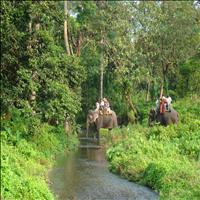 This sanctuary is 45 kms on the Barmer road. Perhaps the largest number of Black Indian Antelopes in variety of species can be seen here.
This sanctuary is 45 kms on the Barmer road. Perhaps the largest number of Black Indian Antelopes in variety of species can be seen here.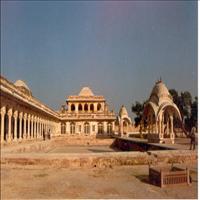 It is 135 kms from Jodhpur. The fort, with its murals, is worth the trouble. It is one of the most picturesque township of Rajasthan. Nagaur was granted to Amar Singh Rathore by emperor Shahajehan. At the main entrance is the complex of royal cenotaphs. The cenotaph of Raja Amar Singh is near the shimmering pool. The Nagur fair during January / February attracts tourists from all over the world. Trading of cows and camels, bull and cock fights and camel races are the main attractions here.
It is 135 kms from Jodhpur. The fort, with its murals, is worth the trouble. It is one of the most picturesque township of Rajasthan. Nagaur was granted to Amar Singh Rathore by emperor Shahajehan. At the main entrance is the complex of royal cenotaphs. The cenotaph of Raja Amar Singh is near the shimmering pool. The Nagur fair during January / February attracts tourists from all over the world. Trading of cows and camels, bull and cock fights and camel races are the main attractions here.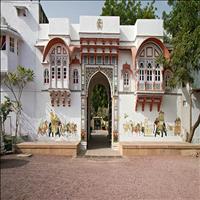 Now converted into a heritage hotel, this place is around 40 kms away from Jodhpur.
Now converted into a heritage hotel, this place is around 40 kms away from Jodhpur.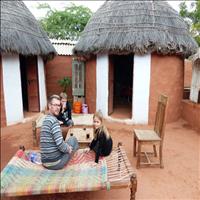 -Bishnoi is a religious group found in the Western Thar Desert of India, the desert overlaps areas of Punjab, and Sindh in Pakistan. The name is derived from bis (twenty) and nai (nine) i.e. followers of 29 principles given by Guru Jambheshwar. Guru Jambheshwar gave the message to protect trees and wildlife around 540 years ago, prophesying that harming the environment means harming yourself. He formulated twenty nine tenets. The tenets were not only tailored to conserve bio-diversity of the area but also ensured a healthy eco-friendly social life for the community.
Here you can see how the humans and the nature live together in perfect harmony.
-Bishnoi is a religious group found in the Western Thar Desert of India, the desert overlaps areas of Punjab, and Sindh in Pakistan. The name is derived from bis (twenty) and nai (nine) i.e. followers of 29 principles given by Guru Jambheshwar. Guru Jambheshwar gave the message to protect trees and wildlife around 540 years ago, prophesying that harming the environment means harming yourself. He formulated twenty nine tenets. The tenets were not only tailored to conserve bio-diversity of the area but also ensured a healthy eco-friendly social life for the community.
Here you can see how the humans and the nature live together in perfect harmony. 